HTC U11
If you're an HTC fan – good news. HTC has brought you a phone that, in many ways, is as good as you could hope for.
Update: The arrival of the HTC U11 Plus and U11 Life, as well a new flagships from Google, Apple and Samsung, have put the U11 into perspective. The HTC U12 isn't too far off either, so if you're considering the U11 you may want to hold on for a month or two.
It's got an impressive spec list, unique design, innovation in the form of squeezable sides and a great camera, and since launch it's got that little bit better, thanks to the addition of Amazon Alexa.
The chipset buzzes along nicely inside a phone that's neither too big nor overly compact, and the interface is as slick as anything HTC has ever made.
In fact, if you're a fan of HTC above all other phone manufacturers, you can probably skip this whole review and just buy the thing (although we suggest you read the bit about the 'squeezable' Edge Sense element, as that takes a bit of getting used to) and just wait feverishly at the front door, waiting for your HTC U11 to arrive.
However, for everyone else, things are a bit more complicated. Yes, HTC has pretty much nailed the spec list, but it's doing so for a rather high price – and one which pits it against some strong alternative options.
Even HTC has diluted the U11's reach since its launch, with the arrival of the superior HTC U11 Plus towards the end of 2017 which packed in a bigger screen, larger battery and a design which reduced the size of the bezels around the display.
It's bigger and more expensive, but you can't help but think that perhaps it's the phone HTC should have launched as the U11 in the first place.
HTC U11 price and availability
- HTC U11 current price: from £499
- HTC U11 launch price: £649, $649, AU$999 SIM free
The HTC U11 originally launched with a lofty price tag of $649 (£649, AU$999), although today it doesn't seem all that expensive when compared to the likes of the Samsung Galaxy S9 and iPhone X.
As the U11 is almost a year old, its price has dropped and you can now pick it up for a far more palatable £499 in the UK, although similar discounts appear to have evaded the US.
On contract you'll be looking at paying less thanr £30 a month in the UK, $29 per month (with no upfront payment) in the US and around AU$59 per month in Australia.
The HTC U11 is still widely available from major networks and retailers, so if you fancy dipping
- See the best HTC U11 deals
Design
- Two-tone shimmer impresses
- Well-built chassis
- Back sucks in fingerprints hugely
The design of the HTC U11 is something that takes a little getting used to – but it's worth taking the time to do so. Holding it in the hand for the first time is a little underwhelming, as the polished Gorilla Glass is so light that it feels a little plasticky in the hand.
The bulbous nature isn't as exciting or feel as premium as the metal build on last year's HTC 10, but don't let that bother you. After a few days you'll get used to the way it feels – and the HTC U11's chassis is well built and solid.
Aesthetically, the U11 appeals in a way we've not seen with many phones. The Liquid Surface design manages to offer two colors at once, with the 'Amazing Silver' and ‘Brilliant Black’ models we tested looking more blue/purple and black/green respectively, depending on the way you hold them.
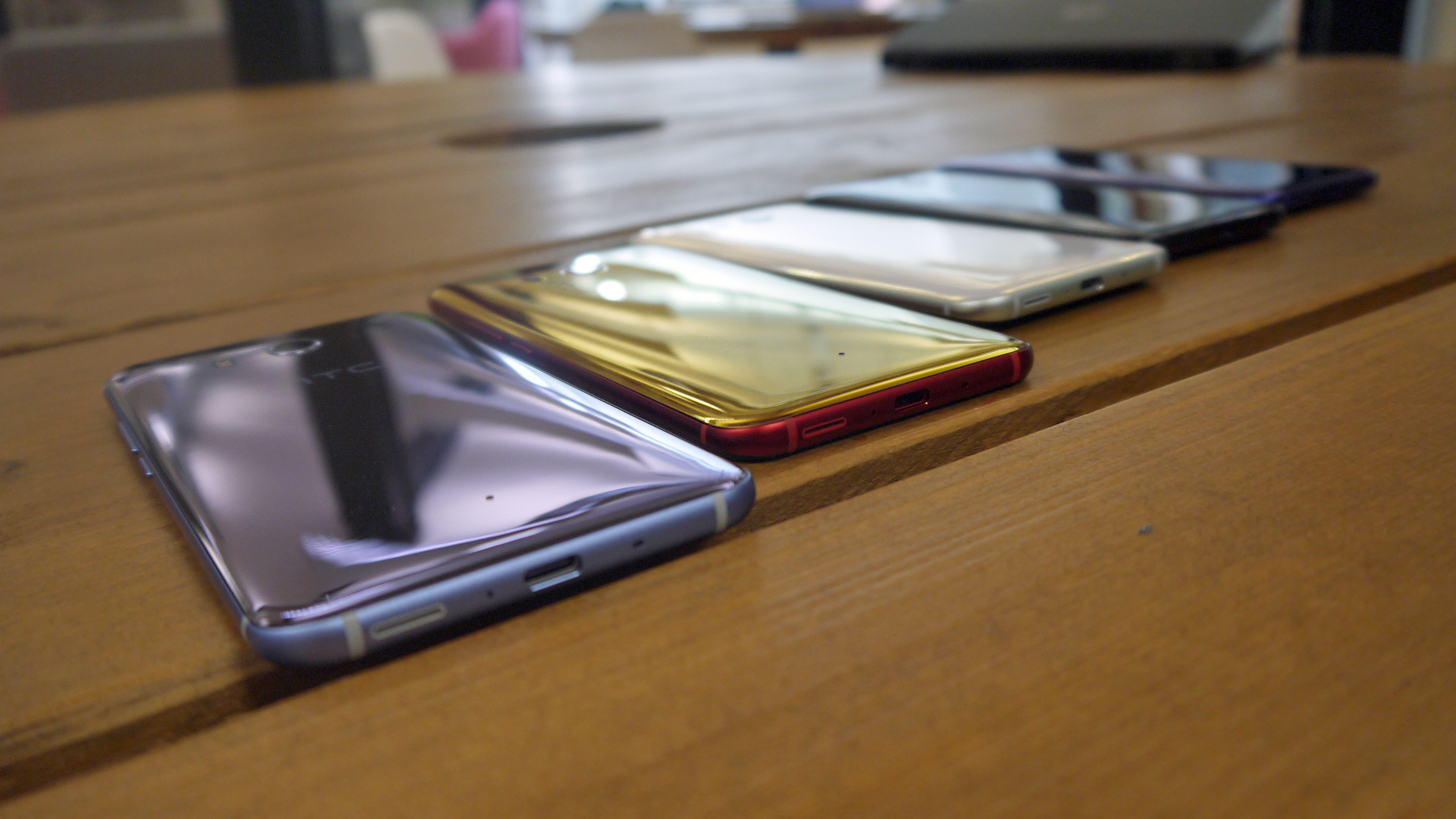
There's also Solar Red, Ice White and Sapphire Blue - and the red is easily our favorite, as you can see below.
The shimmer is really impressive... but only if you never touch this phone, as the U11 is one of the most fingerprint-friendly phones we've ever held. Ever. Ever.
The only saving grace is the fact that your prints wipe off easily, but the overall effect is diminished somewhat. There is a clear plastic cover in the box, which doesn't ruin the look of the phone while keeping it cleaner, but even that’s prone to the odd smudge.
It's also annoying to put any phone, designed to be held in the palm, in a case... and it's a particular issue with a phone you're going to have to squeeze to use.
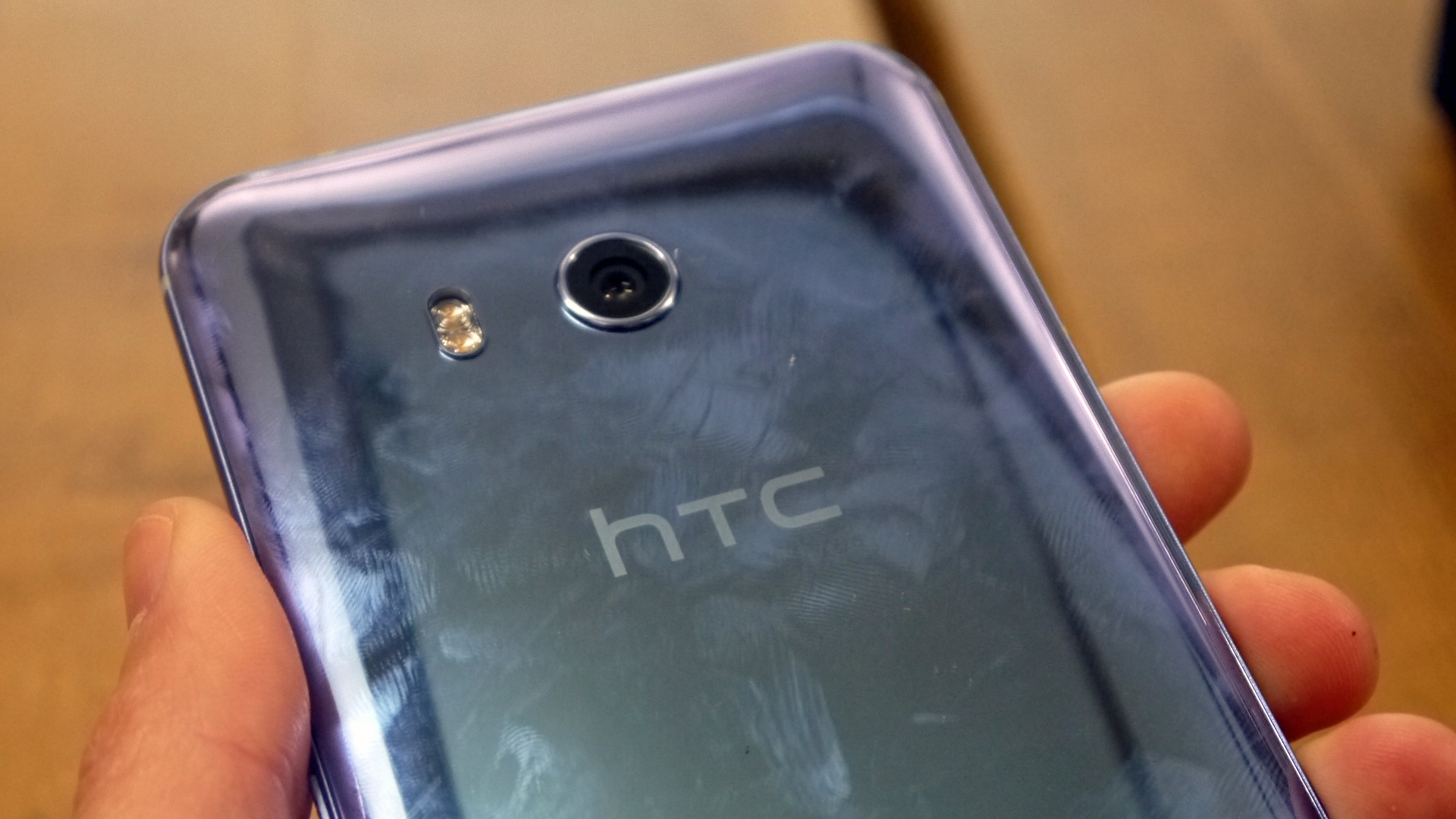
In terms of the rest of the design, the U11 doesn't reinvent anything, with HTC instead putting together a phone with all the right bits in the correct places.
The fingerprint scanner on the front, in the (non-clickable) home key, is easy to hit and works almost flawlessly. Perhaps we're willing to give it more credit after Samsung played 'hide the scanner' on the back of its Galaxy S8, but this feels just right.
The rounded glass on the HTC U11 is probably one of the most striking things about the handset day to day, and it's something HTC put a lot of effort into for good reason.
Yes, this is still the same ‘black rectangle’ design that so many other devices offer, but it’s got a foundation of quality and striking colors.
The volume rocker and power buttons on the right-hand side fit nicely under a thumb or forefinger, depending on your dominant hand, and otherwise things are very clean around the edge of the U11.
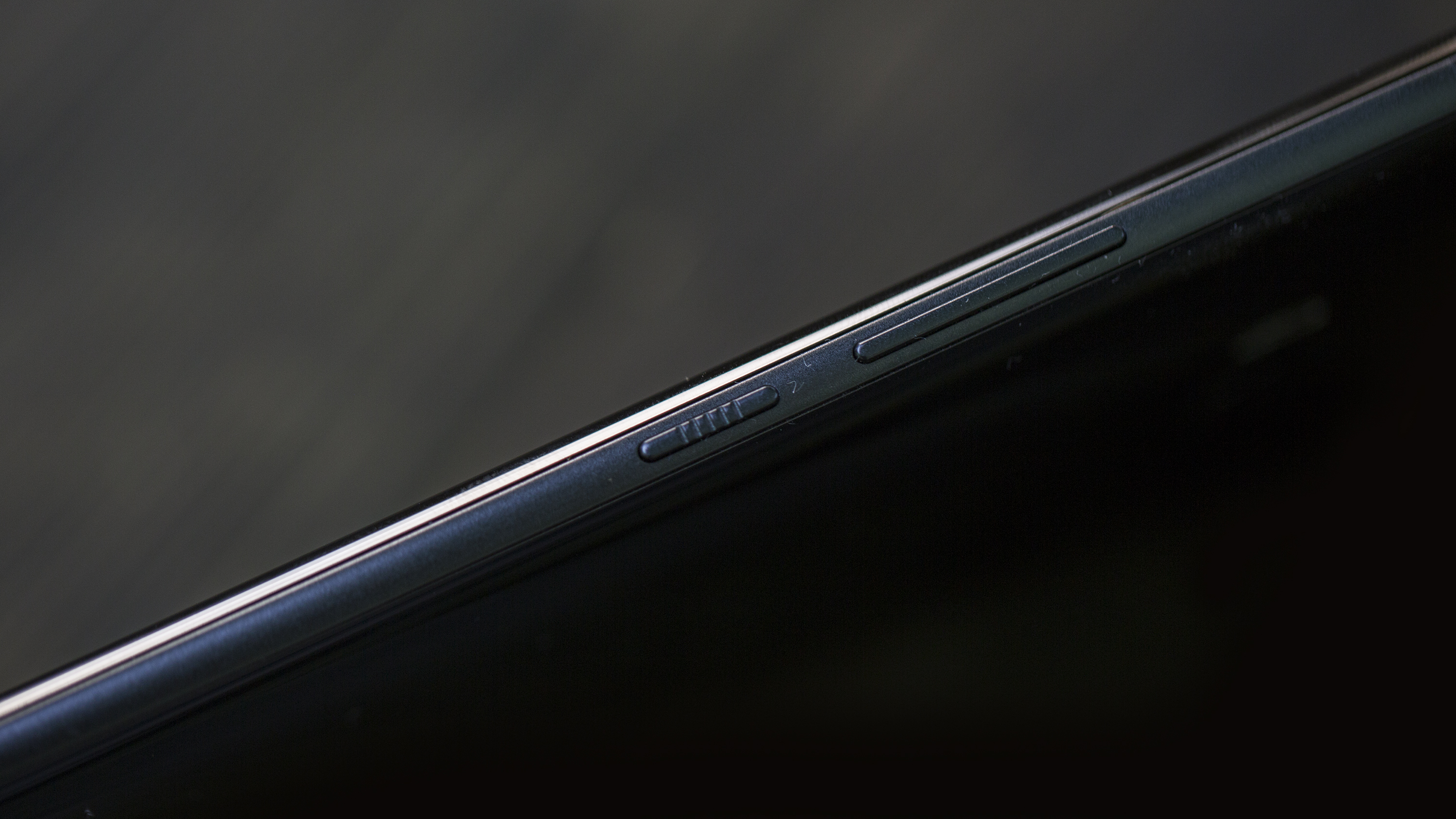
That's partly because the phone is waterproof to IP67 rating meaning you can throw it into water, but in real life you can just dunk it in shallow water, bring it in the shower or wash it clean without having to spend an extraordinarily large amount of money and shame getting it fixed.
One of the issues we have with this phone is there's no headphone jack on this phone, as HTC decided to follow Apple and Motorola's lead and drop the port in favor of a single slot.
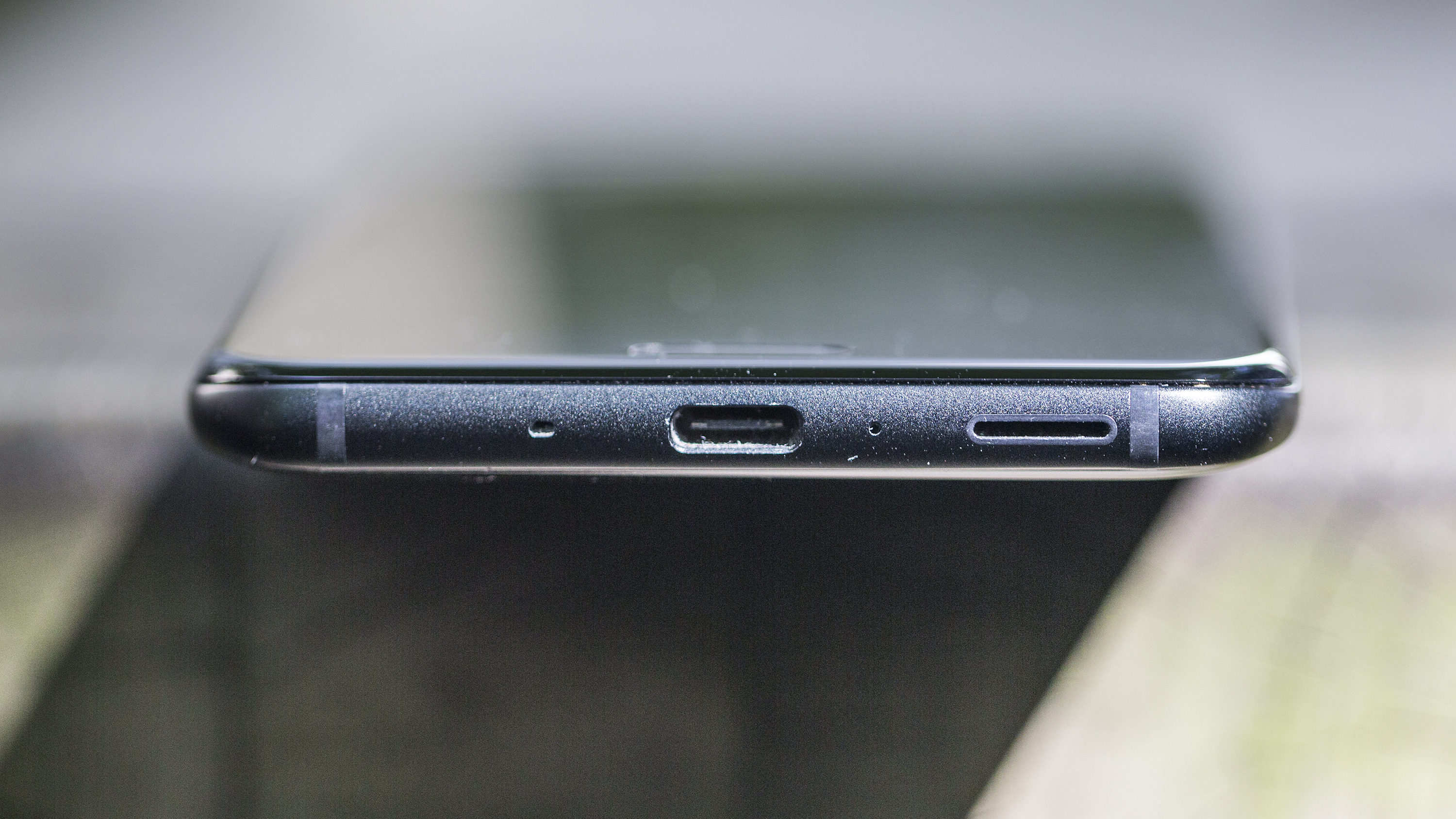
The USB-C port on the bottom of the phone will serve as the power and sound portal for most, which means it'll irk if you need to get some juice in while listening to your top tunes.
Overall, we're big fans of the way that HTC has redefined its design strategy. There are only so many ways you can make a phone look iconic these days, and HTC has built well on its design heritage in the smartphone space to deliver something you'd be proud to put down on the table.
Screen
- High resolution
- Slightly dim
- Auto brightness not perfect
The screen on the HTC U11 is something that’s tricky to review. Until recently the 5.5-inch display would have easily ticked all the boxes, as it does very little wrong.
It's large, bright and clear, with the QHD (1440 x 2560) resolution offering as much clarity as anyone could want while still, seemingly, preserving enough battery life.
However, with the Samsung Galaxy S8 and the LG G6 now on the market, there's something archaic about how the screen on the HTC U11 looks. The bezels appear massive, the screen boxy and it just feels... old.
However, if you're not bothered about those other phones, then you won't want for any better features on the HTC U11's screen – but don't put it side by side with the Samsung Galaxy S8 if you don’t want to be nagged by doubts about your phone choice.
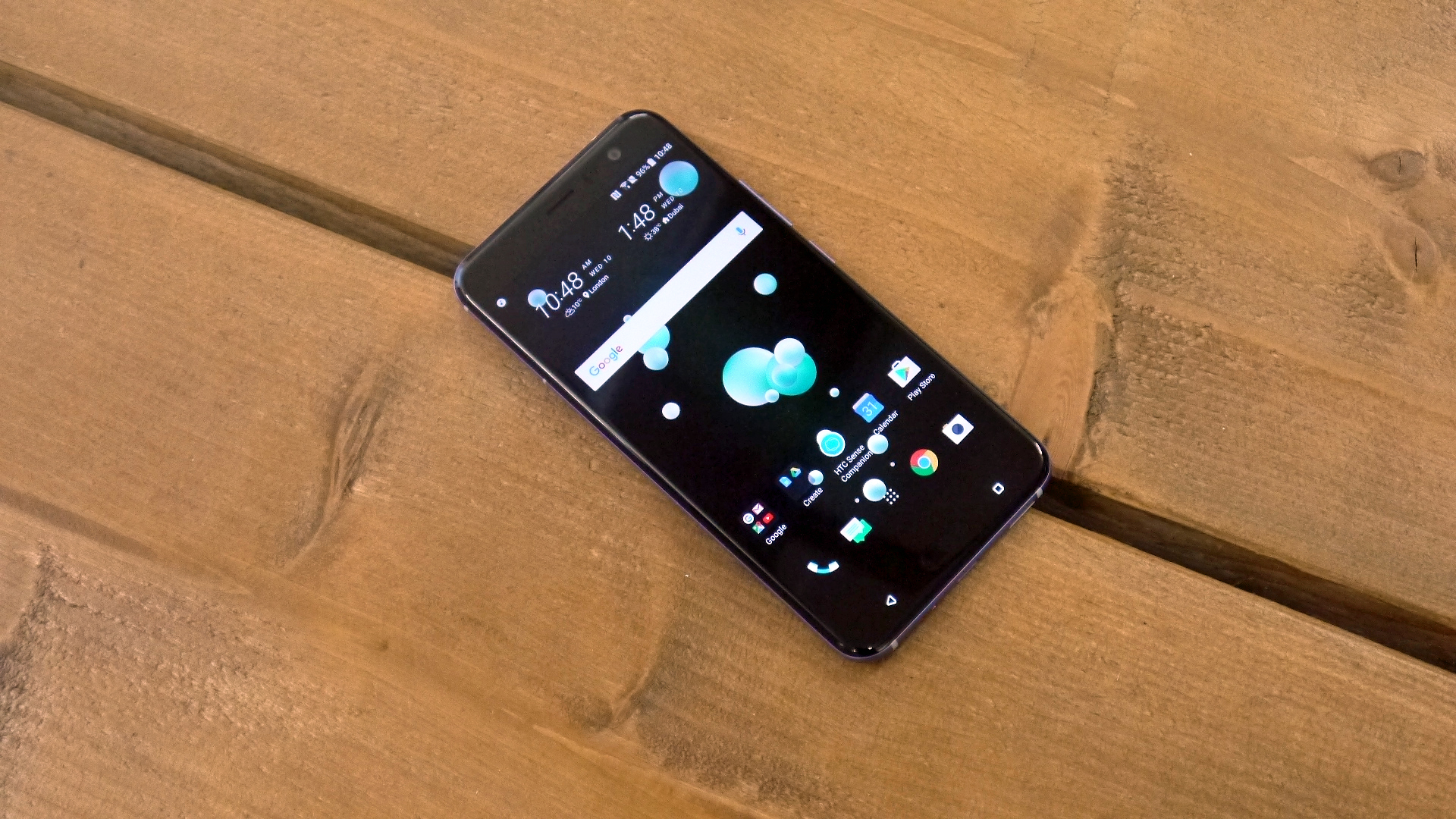
While the screen is clear and bright in most situations, it can be reflective, and it's not as bright as we've seen on other handsets. There were times when trying to watch Netflix outside proved a challenge in terms of of angling the handset the right way, and only in the shade did it really start to show off the power of what the HTC U11 can do.
It's also not the brightest screen on the market, which shows that the new wave of shoving HDR compatibility into handsets is perhaps something HTC should have looked into.
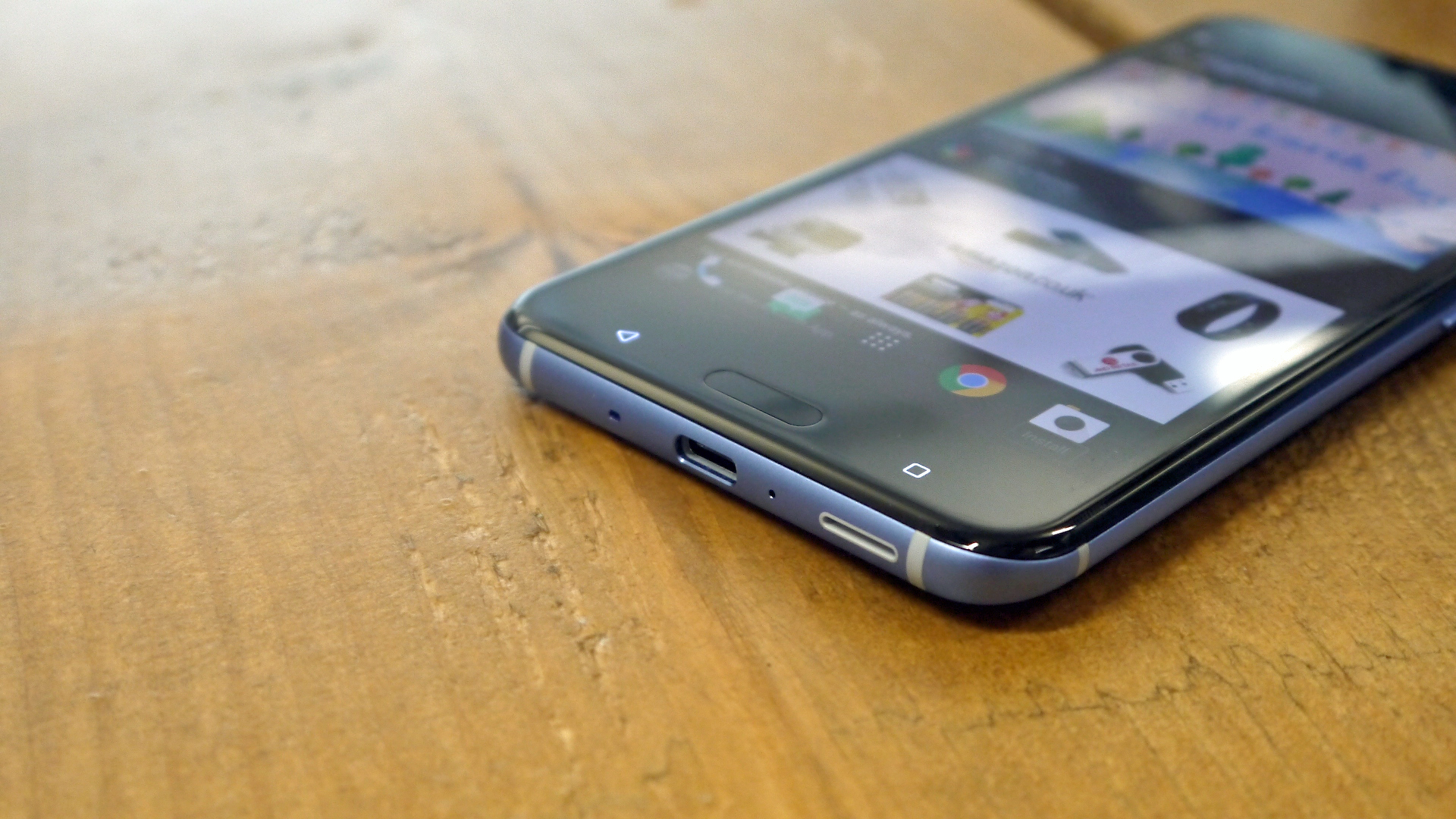
The auto-brightness is still something HTC needs to work on, as it doesn't dynamically alter well enough at all – blinding in the night and not bright enough when heading outside. It should be able to work across all areas of the brightness spectrum, but we found ourselves heading into the notification bar to to tweak the levels too many times for our liking.
You won't miss too much from the screen on the HTC U11 – it's one of the better options on the market thanks to using the ever-evolving Super LCD technology – but it's not as impressive as other flagships on the market.
- Innovative idea
- Grip can make the camera framing move
- Both Edge Sense and Alexa feel too half-baked
The headline feature of the HTC U11 is Edge Sense, which essentially enables you to squeeze the phone and have it... do stuff. The reason we're being so vague is you'll get a different action depending on how hard and long you squish the phone for.
Out of the box, a quick squeeze on the bottom half of the phone will open the camera, and it’ll be in ‘basic’ mode.
When you've opened the camera, you can use Edge Sense to take a picture, or long-hold the sides to move into selfie mode (hopefully you're following this...).
This feels like it should be fairly intuitive, but we found we had to remember to do it time and again. And when you're taking a picture by pressing the sides of the phone, it'll cause the handset to tilt slightly, so you can miss the framing of the shot you're going for.
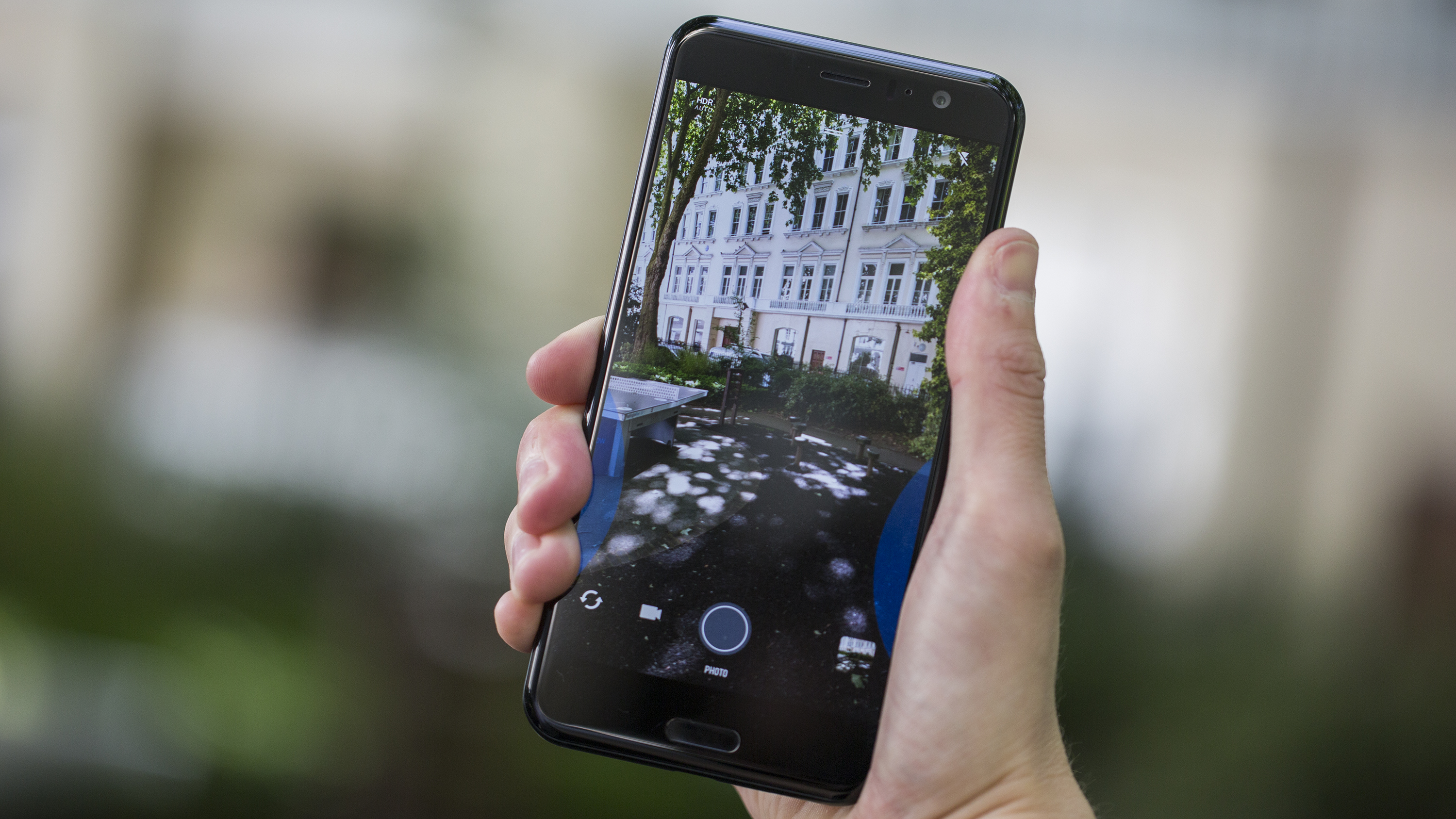
The idea of just squeezing the phone is smart in one way: you don’t need to move your fingers to hit the screen. But you can just double-tap the power button of the U11 to launch the camera and then press the volume down key to take a picture – and that’s actually more comfortable.
Head into Settings and you can customize what an HTC U11 Edge Sense squeeze does, and add a secondary gesture for squeezing and holding. Most of these are pretty innocuous. You can launch an app of your choice, start voice recording, toggle Wi-Fi or use the flashlight.
The most up-to-date choice for those who like to experience the latest tech features and fads is to launch a voice assistant. You can choose the standard Google Assistant or Amazon Alexa. And the HTC U11 is one of the first Android phones to integrate Amazon’s assistant.
You download an app called HTC Alexa, which lets you talk to it just by saying “Alexa”, even if the phone is asleep. It can’t get past your security but is fairly good at recognizing different voices, and is a way to bypass Edge Sense.
At times it takes a few attempts for the HTC U11 to realize you’re talking to it, though, as if it was off playing solitaire or something.
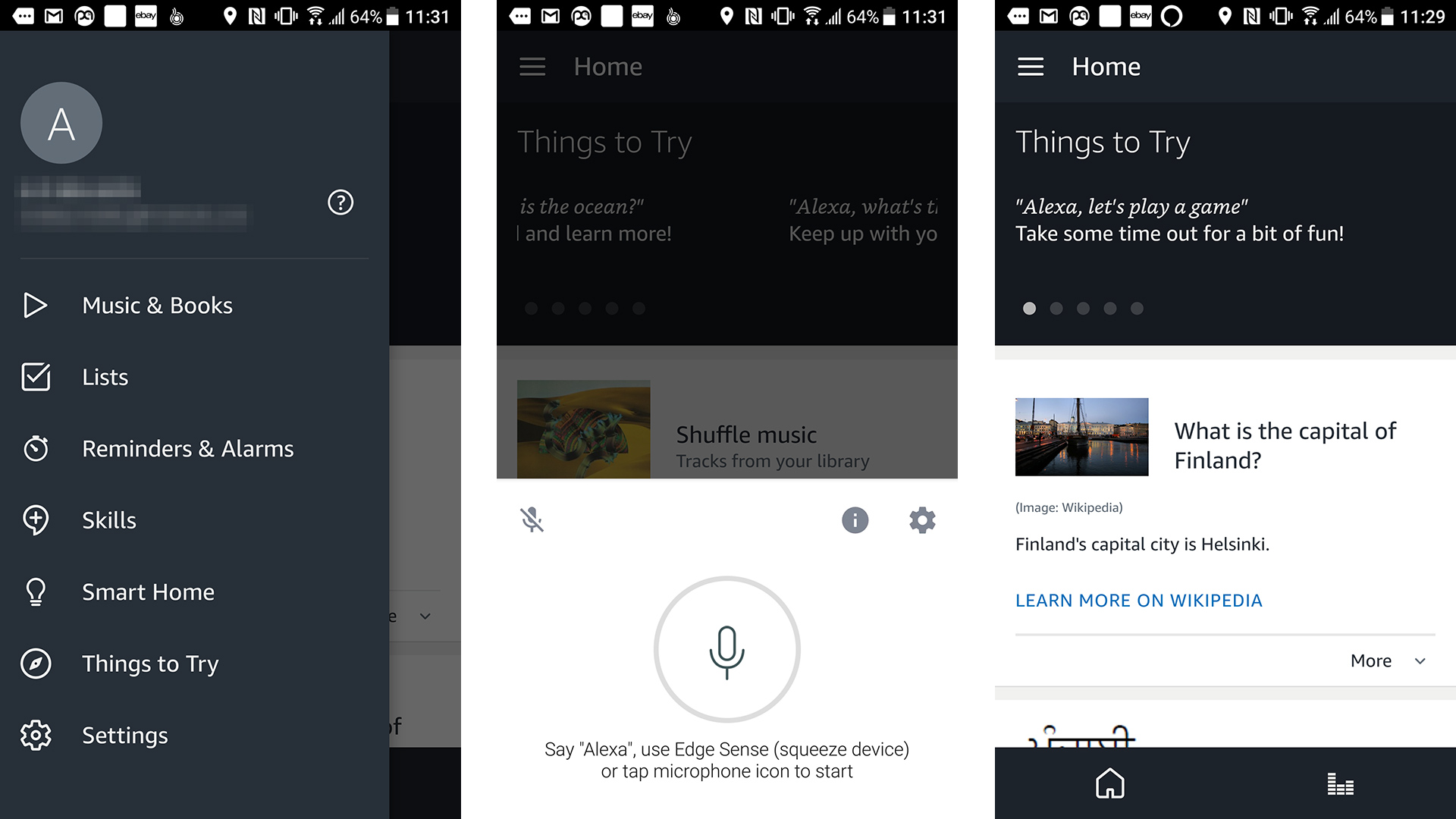
Alexa’s current strength, other than the usual feats of being able to tell you how many people live in Belgrade or the age or Michael Caine, is connection to smart home services. However, we’ve struggled to get our Philips Hue lights working with HTC Alexa.
Abilities outside of Alexa’s basics are added through things called Skills, which are effectively assistant mini-apps. Even after a couple of hours of deleting, reinstalling and unplugging we couldn’t get the HTC U11’s Alexa to ‘see’ our Hue lights with the Philips Hue Skill.
Alexa on phones isn’t quite the ultra-streamlined dream just yet, which is perhaps one reason Amazon didn’t go for an instant Android-wide roll-out. For example, you can’t yet use it to control Spotify on the HTC U11. You’ll just be told it’s “not supported on this device”. And it can’t do things like send text messages or open apps either.
Skills can bridge these gaps to an extent, but we’re a way off where we need to be for Alexa to be genuinely useful. Or easy to use for people who don’t spend their lives tinkering with tech.
The HTC U11’s Edge Sense has a similar problem. What promises to be the best thing about it is yet to land: the ability to have it work contextually in any app at all.
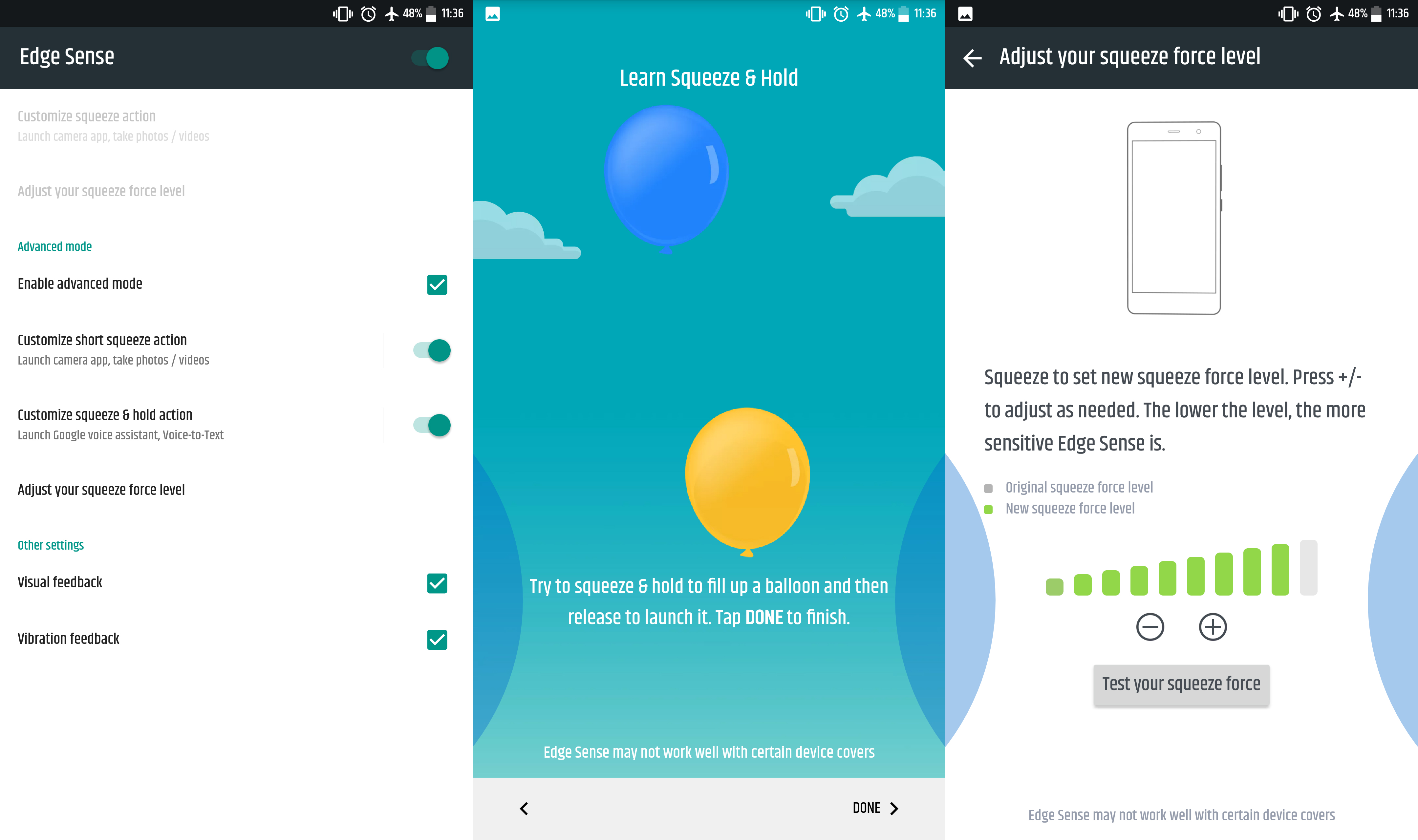
So if you're after coffee shops in Google Maps, you should be able to 'code' that to a short press. Or if you want to open the pro mode on the camera, a long press will do that rather than opening the selfie mode.
The problem is this functionality isn't coming until months after launch. We want to be able to squeeze the phone when Spotify is live to play/pause, but have it open the camera from the home screen.
And one final thing: it’s not sensitive enough. Well, that’s not quite accurate: it’s too sensitive sometimes if you set the pressure levels lower, and too hard to grip and activate at other times.
That’s because you don’t hold your phone precisely the same way each time, and the extra effort to grip the sides isn’t a natural movement.
Overall, we like what HTC is doing in terms of trying to innovate here… it just doesn’t quite work well enough. There is something here though, and maybe when the final customizing capability appears this feature will be a must-have.
But right now, it takes effort to relearn how to hold your phone – and given that Edge Sense is probably the headline feature of the U11, not launching it fully finished is a big opportunity missed.
Interface
- Clean interface
- Fast performance
- Google apps aren't always the best substitute
The interface on the HTC U11 is still as slick as ever; while Sense is no longer the leader in terms of our favorite Android overlay, it’s still up there.
The decision to flip to Google’s suite of apps, rather than loading HTC phones with duplicate apps, keeps things clean. For the most part this works, as the Google apps are pretty good.
However, there are some areas where having Google’s does get rather in the way: for instance, Google Photos still feels like it would rather always have an internet connection, and doesn’t show all your pictures instantly, instead asking you to choose which folders to display.
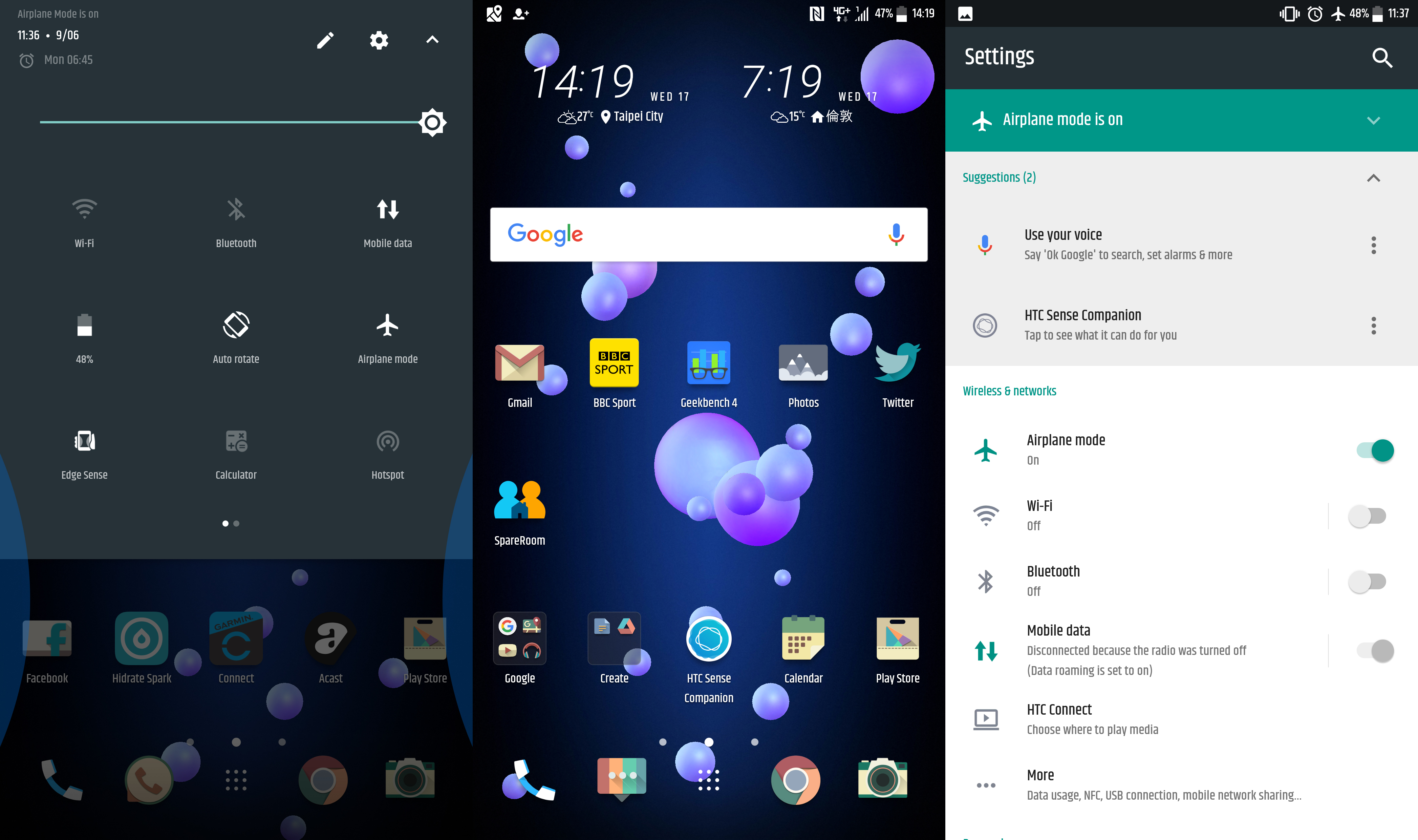
If you take a screenshot, you expect to be able to see it in the gallery, and while it’s easy enough to find, it doesn’t feel intuitive… and that should be the primary metric when deciding on a user interface.
It’s interesting to note that moving to the HTC U11 from the Samsung Galaxy S8 Plus has shown how slick the ‘slide up’ motion on Samsung’s phone is. With that phone you just give the screen an upwards swipe and you’ll get into your list of apps – it’s like what Google is doing with Nougat.
HTC’s stuck with the older version of the user interface, and it doesn’t feel as advanced. There are some Nougat features in there – being able to go split-screen, for instance – but this is mostly very familiar territory, and could do with an overhaul.
And while we appreciate that it’s probably early software, the HTC U11 does suffer from some judder at times, with some apps playing up a touch.
It’s nothing major, but it borders on glitchy every so often… not what we’re expecting from a big flagship, but unfortunately a common problem as companies rush to launch with the best and brightest software.
That said, this phone is insanely powerful. With the Snapdragon 835 CPU on there, along with 4GB of RAM, everything generally whipped along pretty quickly, and the Geekbench score of 6312 is up there with the very best at the moment, the benchmarking app lauding the raw power offered by the HTC U11.
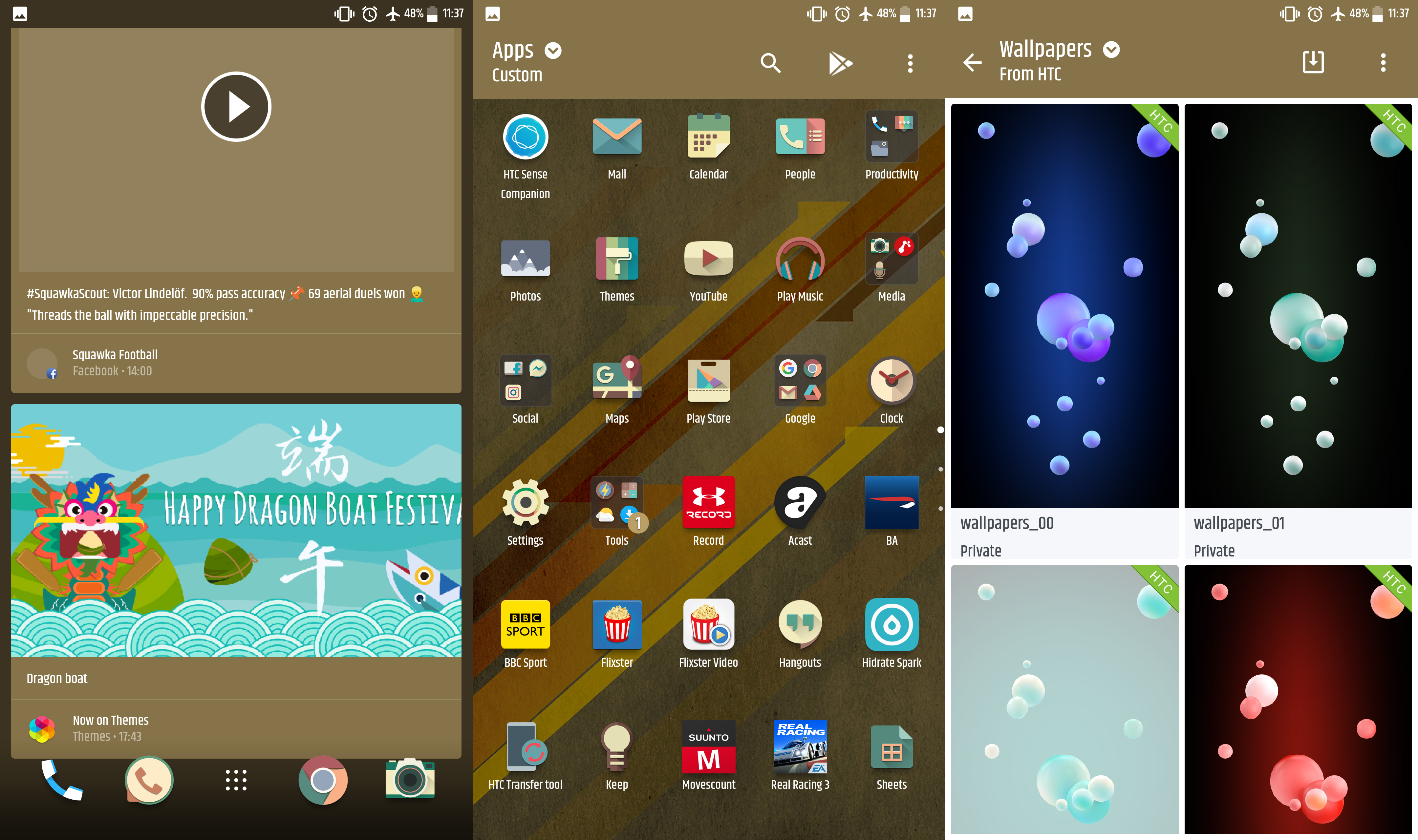
It’s a shame to see what’s happened to BlinkFeed (the feed of information on the screen to the left of the main home screen); four years ago it seemed like a genuinely powerful reason to buy an HTC phone, but since then it’s eroded to the point of being useless.
The problem is twofold: firstly, the layout of the information, which is a mixture of your calendar, social networks and curated news feeds, is a visual mess compared to other apps on the market right now.
The second issue is that it’s now filled with sponsored ads, coming far too regularly – it’s understandable that HTC is trying to find ways to bolster revenue, but it jars when you’ve just spent so much money on a phone only to be served with ads.
News Republic, the app that underpins the news aggregation, isn’t intuitive enough either – some of the things it suggests are just nonsense given the topics we asked to see, and it doesn’t seem to learn that well either.
Ultimately, we found browsing Twitter was a more enticing experience; turning BlinkFeed down to just social networks was useful, but with the ads as well still too irritating.
Sense Companion
- Genuinely impressive at times
- Needs to do more
Sense Companion is something we approach with trepidation… because it sounds almost too good to be true.
An artificial intelligence (AI) app of sorts, it’ll look at the weather where you are, your calendar, your battery level and daily usage to give you insights on how to use your phone better.
Got an appointment later in the evening and your battery’s dwindling? You’ll get a notification when you’re still at work, when you can do something about it.
Or been using the phone a little too much today? You’ll get a notification telling you that you’re in the ‘above average’ usage category, with a rundown of what apps you’re using.
It’ll even tell you where to eat at a particular time of the day if you’ve got location settings enabled.
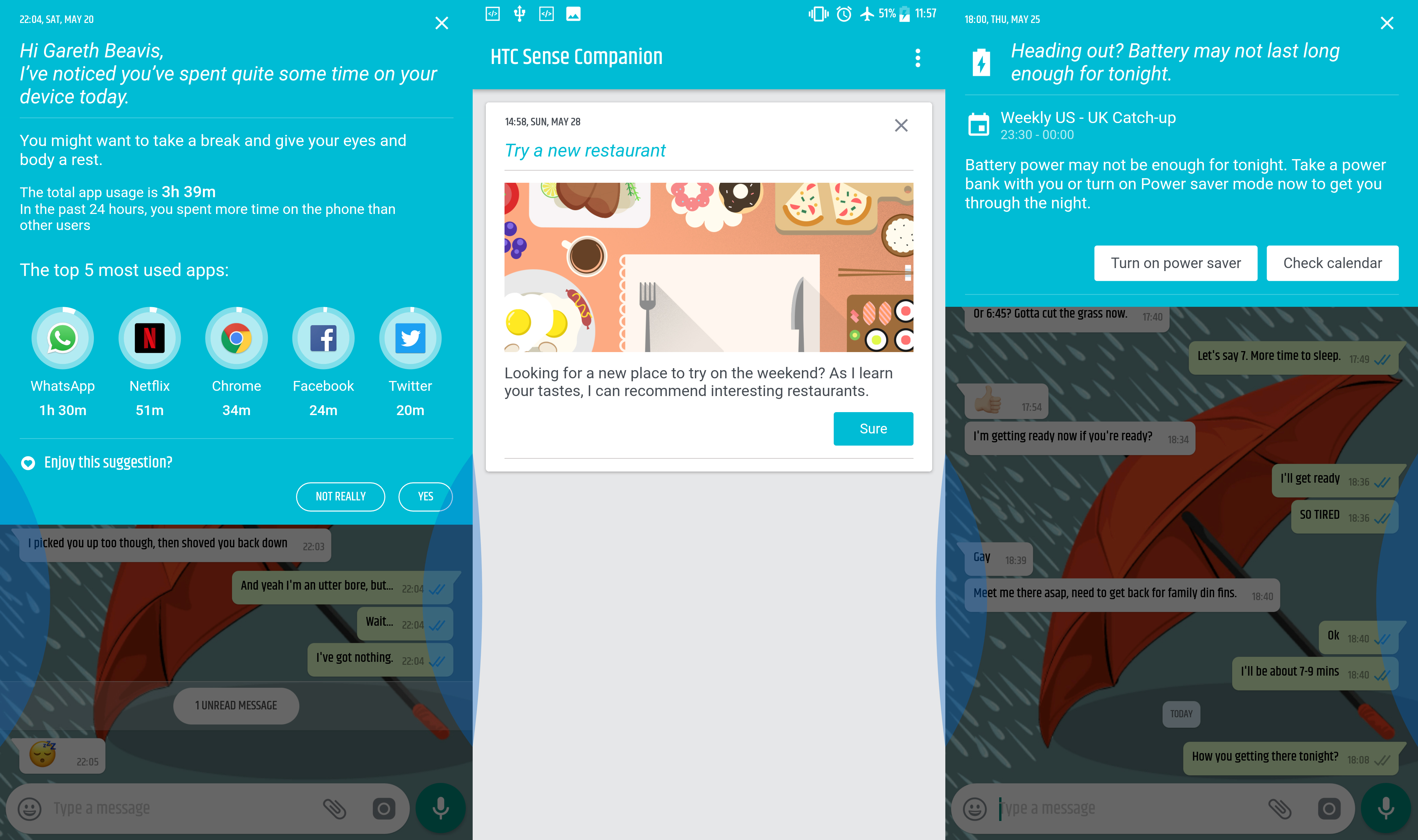
In terms of how genuinely useful the app is to use… well, it’s not quite HTC's promised AI assistant, but it’s helpful. Being told daily we’re above average for our usage isn’t fun, but probably true. The battery notifications are useful as well, if a little too regular.
However, it doesn’t quite go far enough. The usage prompt doesn’t offer any tips on what to do – we ended up downloading Forest, an app that encourages you to put your phone down, but that’s something Sense Companion could have offered.
And the lunch notifications aren’t useful enough – most of the time we don’t want to eat out, and when we do we know how to use Google to find a place.
With a bit of work, Sense Companion could be genuinely useful… but it’s not quite there yet, which is starting to feel a bit like a common theme with this phone.
- Very impressive performance
- Strong HDR capabilities
- Shutter speed lag irritates
The camera on the HTC U11 is a 12MP affair, with only a single lens to speak of – there's no double sensor here, as we're starting to expect on flagship phones.
That doesn't really matter here, thankfully, as HTC has packed in some good technology for the single camera, and as a result you'll largely get excellent snaps.
The HTC U11 has been tipped by imaging analysts DxOMark as the best cameraphone on the market following its extensive battery of tests, and while we've seen other high-scoring phones not actually have brilliant day-to-day cameras, the U11 is more than capable.
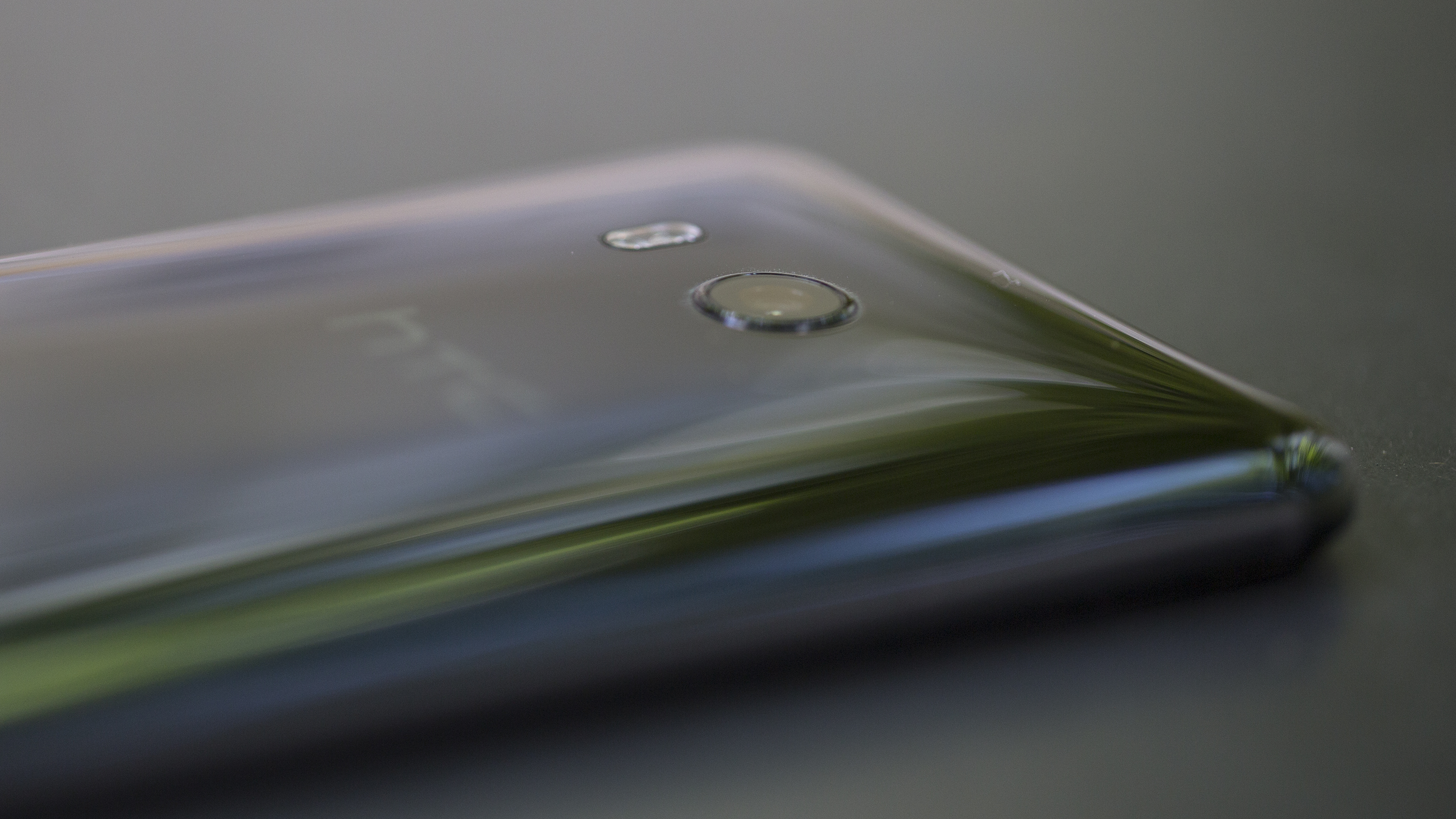
The main feature it's sporting is the HDR Auto mode, which combines the best parts of three snaps into one every time you chop the shutter.
It's a feature that was particularly prominent on the Google Pixel, which coincidentally enough HTC also manufactured, so it knows what needed to be done in making a good image.
There are a range of mode options with the camera as well, with professional mode giving a wide range of options to tune up your snaps, and the ability to capture in raw if you like getting all the data from the sensor to manipulate.
Like on the HTC 10, once you've taken a picture in raw mode Google Photos can enhance it further for you, working out the correct exposure and often making the picture even clearer.
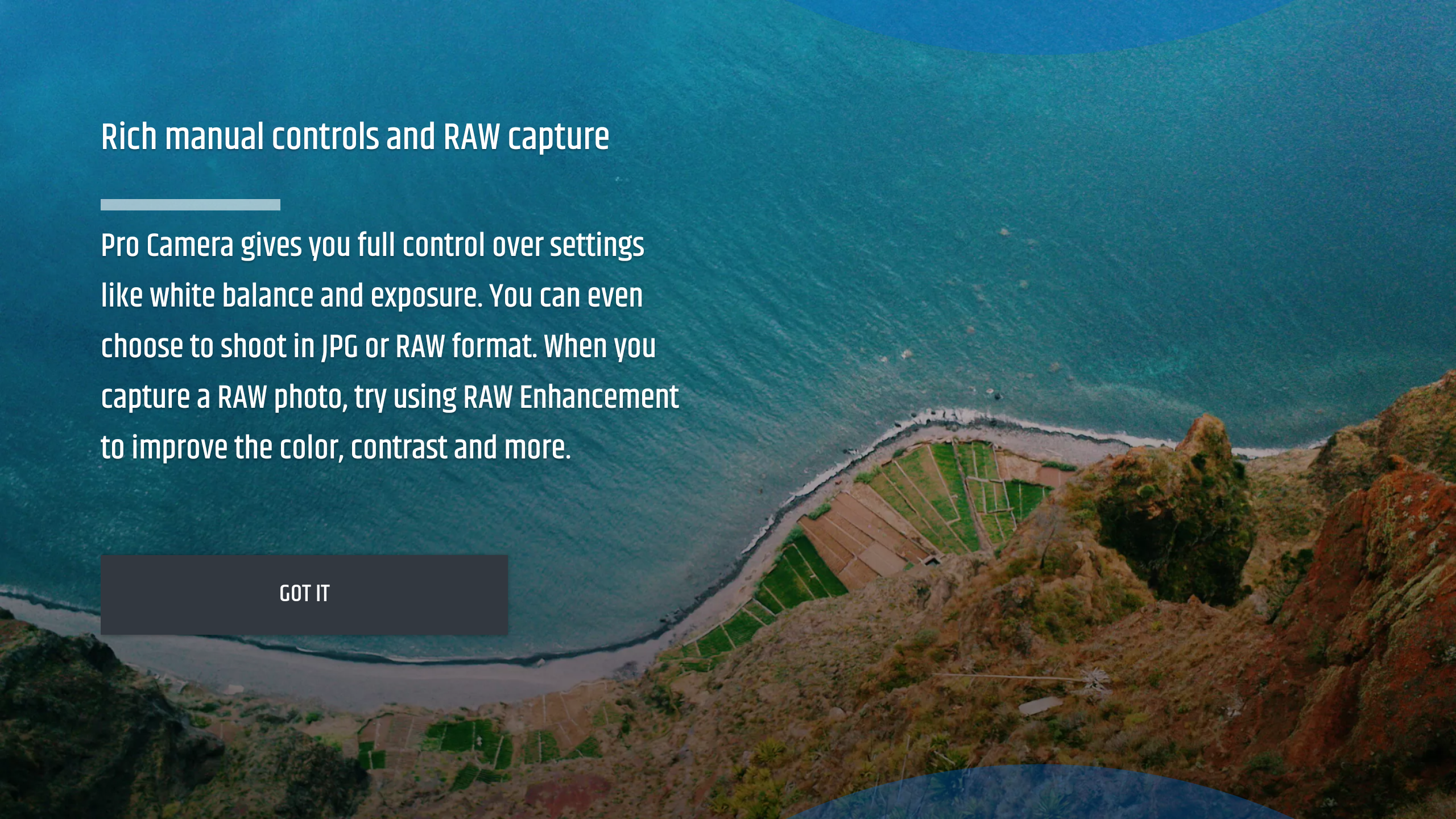
However, even with a monumentally strong processor on board this still takes a while – it is faster than last year, but you won't be able to do this for every photo you take as it'll take up far too much of your life.
The other thing that HTC still hasn't solved with its phones is a slight touch of shutter lag. It's always been one of the slower phones to respond to the touch when you want to take a photo, and while the U11 is quicker than before there's still a noticeable pause when you want to take a snap.
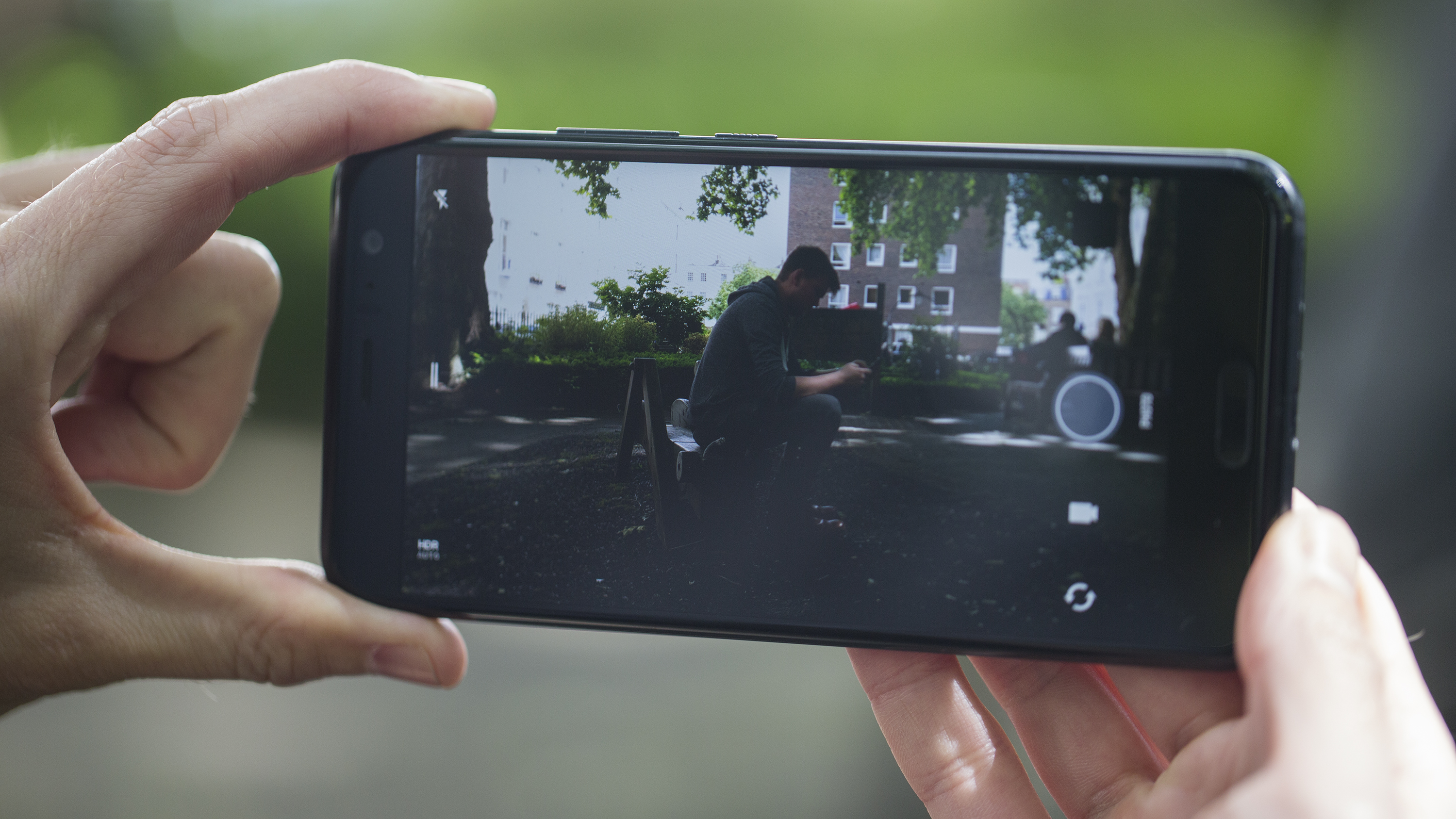
This is particularly infuriating when you're trying to grab a picture of a child or an animal that isn't holding completely still, and considering that HTC is making a big deal about the fact the U11 can focus in 0.3 seconds this is an odd performance.
We don't want to make this sound like a huge problem – it's a blink of an eye slower – but it is noticeable, and it means that when you use the squeezable sides of the HTC U11 to take a picture you're always worried that the framing will be off, as the squeeze itself seems to shake the phone a little.
You'll get used to it, but even at the lowest squeeze level you're still going to get some shudder with the effort of clenching your palm.
It's still much easier to use the volume-down key to do the same thing – it's more intuitive and takes less effort than using Edge Sense.
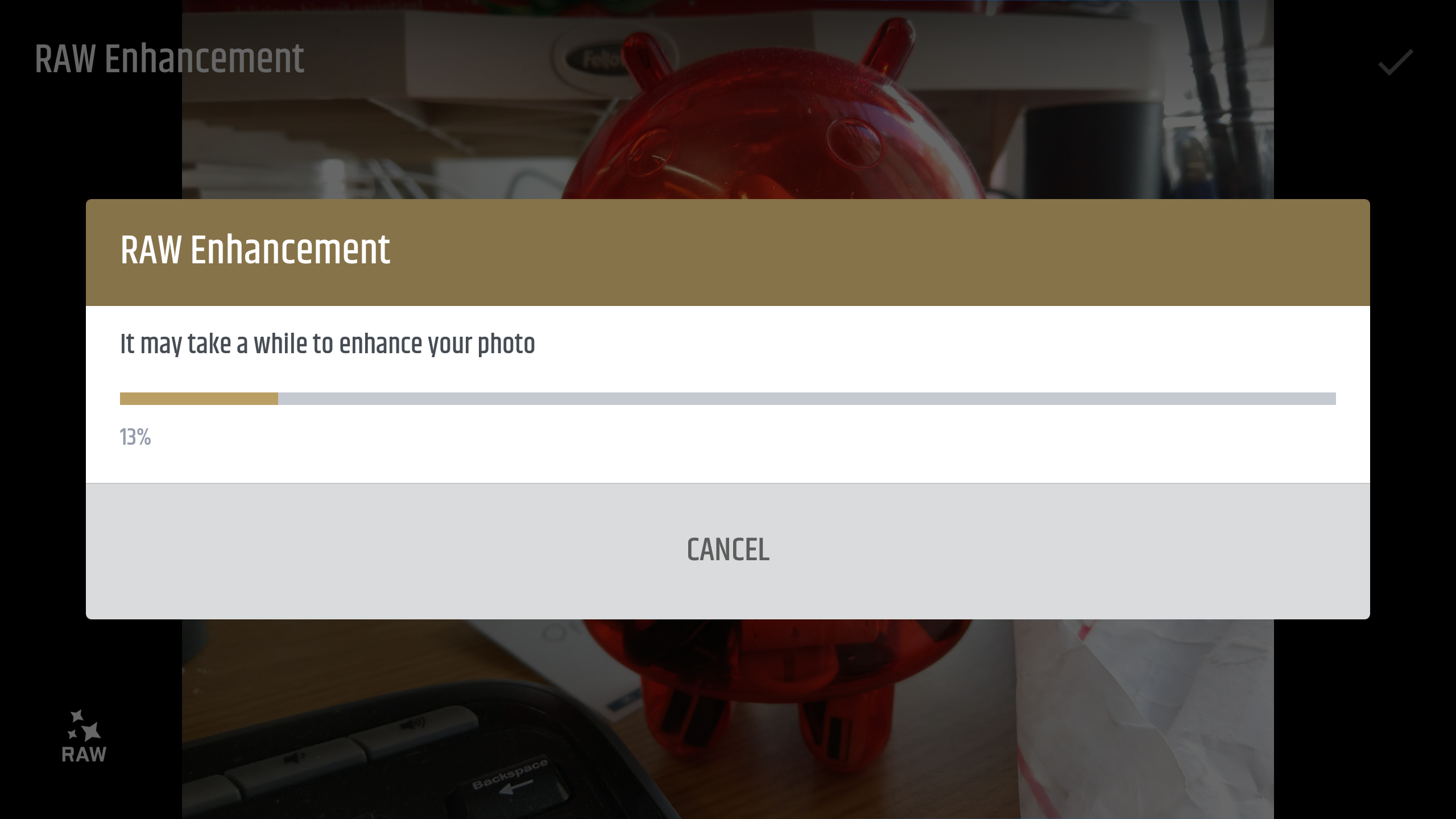
The front-facing camera on the HTC U11 is one of the better examples out there, letting in loads of light in the 16MP sensor and an f/2.0 and make the pictures more clear.
This is necessary as there's no flash from the phone itself on the front 16MP sensor, but it's a better option in our opinion - the low light performance and sharpness from the selfie camera is one of the very best we’ve seen.
The video recording on the HTC U11 is, once again, among the very best we've seen from a smartphone. The lack of distortion at a gig or generally loud scene is unbelievable, and combined with the 4K sharpness on offer it leads to some stunning videos.
The sound is properly recorded in 3D thanks to more microphones being packed in, and you can even zoom into the action and have the sound follow, the U11 intelligently working out where the audio is coming from and following the focus.
We’re not sure that it’s a necessary function to have – it’s super-cool, but it only works well when trying to video something from far away in a noisy environment, and zoomed in video always borders on the grainy.
However, for a kid's school play or recital, it's the perfect feature.
Camera samples
Battery
- Lasts pretty well
- Boost+ does well to keep things in check
The battery life on the HTC U11 comes from a 3000mAh power pack, and it's actually much better than we were expecting.
HTC has always had a problem with getting the best out of its batteries, and the worry every time we use a phone from the brand is that we'll spend too much time hanging around a power outlet, just in case.
Thankfully it seems that things aren't anywhere near as bad with the new HTC, and that largely seems to be due to the HTC Sense Companion / Boost+ technology working in tandem to learn your habits well.
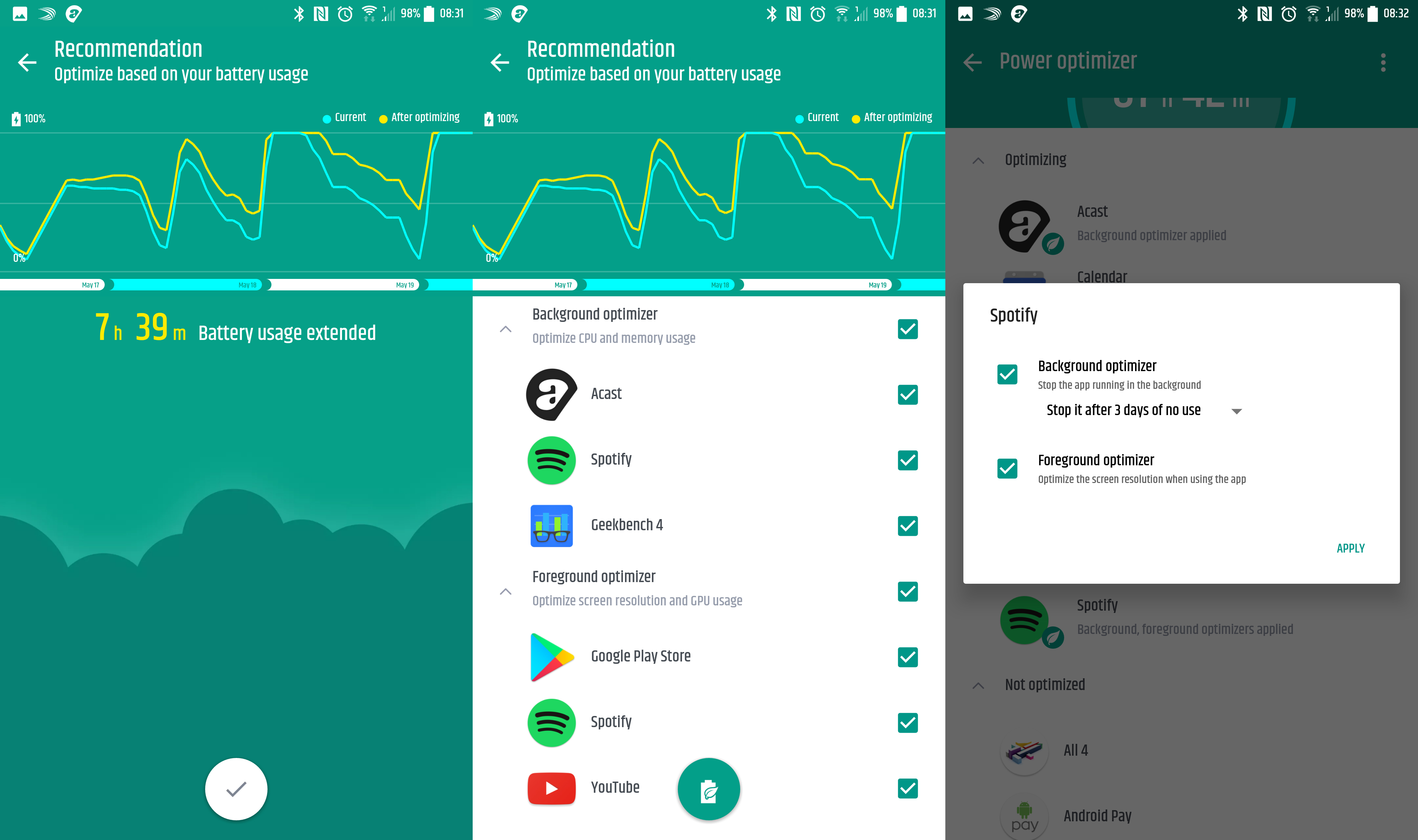
This means things like noting which apps you're using in which ways, so if you don't need all the pixels from the screen for some functions it'll automatically fire up fewer – going to HD mode doesn't really seem to make much difference visually, but overall it seems to have a good effect on the battery life.
Well, at least that could be the case. The graphs that the U11 will throw at you when suggesting battery optimizations show two lines: one that highlights your current usage, and one that shows what you could be getting if you take certain actions.
We've no way of telling whether the claimed increase in battery life is correct, but being able to toggle on certain things allows you to make some decisions on whether you need the extra power.
Sure, your favorite graphically-intensive game looks sublime in QHD, but is it worth the cost of an hour's battery life? Probably – but at least you'll know what happened at the end of the day when you're reaching for the charger.
The HTC U11 packs Sense Companion, as previously discussed, and while it's rudimentary over battery tips, it does work – when it notes that you've got something in the calendar that evening and you're starting to get low about mid-afternoon, you'll receive a gentle prompt to get charging.
That only works if you properly use your calendar, however – which many of us don't do, only putting in the odd thing. If you've got a shared calendar at work Sense Companion will also spot meetings or dinners for your co-workers, so the notification from the assistant isn't really needed.
Then again, it's no bad thing being prompted to charge if you want to have the whole night without battery worry - even if you are just going home to weep into a lasagne for one.
It's a shame there's no wireless charging on the HTC U11, and we're pretty sure that's a cost-saving exercise. HTC told us during a pre-brief that it was omitted for 'convenience', as the charging speeds weren't good enough yet – but surely the most convenient thing is to have the phone charging in a number of ways?
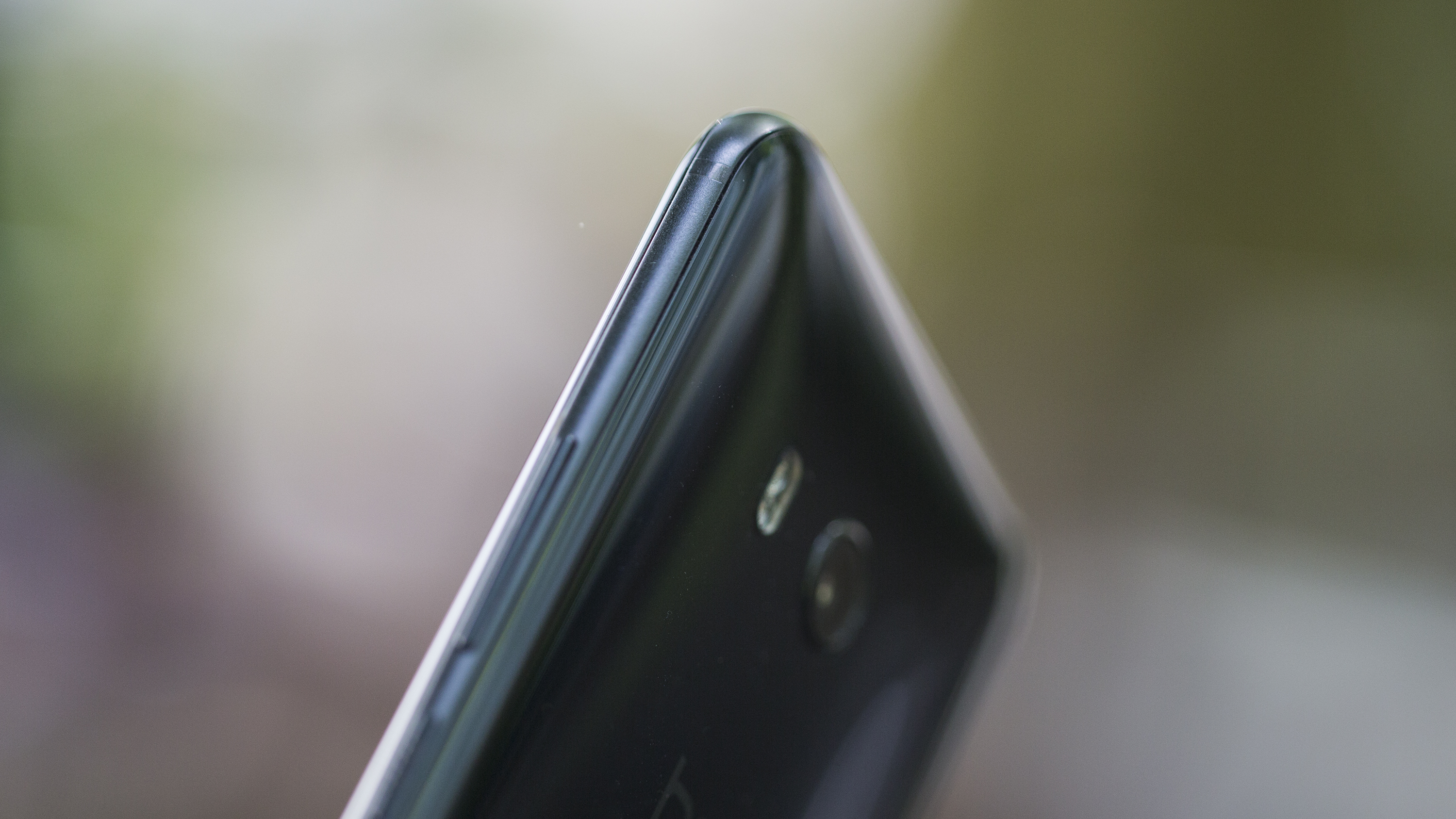
Given there's no metal back here to cover up a wireless charging connector, this feels like a missed opportunity, especially when the iPhone 8 inevitably cuts the wires for powering up, making the U11 look far behind in terms of spec.
In terms of day-to-day battery performance, we were generally pretty happy with the HTC U11. It’s not the best on the market, but with medium usage it would generally make it happily through the day.
It’s at its best when you’re not turning on the screen, as its background sleep mode is rather advanced indeed at working out what needs to be stopped from drawing power – and only improves with Boost+ tinkering away behind the scenes.
However, we couldn’t ever get the HTC U11 to last comfortably into the next day, so while it’s a decent performance it’s not as good as some of the other top performers on the market.
We ran our standard Full HD battery test, looping video for 90 minutes at full brightness, and the HTC U11 didn’t fare well: 22% lost over the time is on the lower side, with the Samsung Galaxy S8 and S8 Plus managing 19% and 14% drops respectively.
So battery life is, well, fine. It won't wow you, but it'll do.
- Excellent audio performance
- Great in-box headphones
- Dedicated DAC to make your current headphones sound better
The audio performance is one of the best reasons to pick up the HTC U11, with it offering strong clarity and all the tools you could want right out of the box – including Hi-Re Audio playback, if you’ve got any high-quality files kicking around.
The first thing that HTC is offering is its USonic headphones, which bring decent sound for a set that come bundled with a phone.
Some have noted that they're a bit bass-heavy, but for earbuds that feels like a good thing to have achieved, given the smaller space for the drivers.
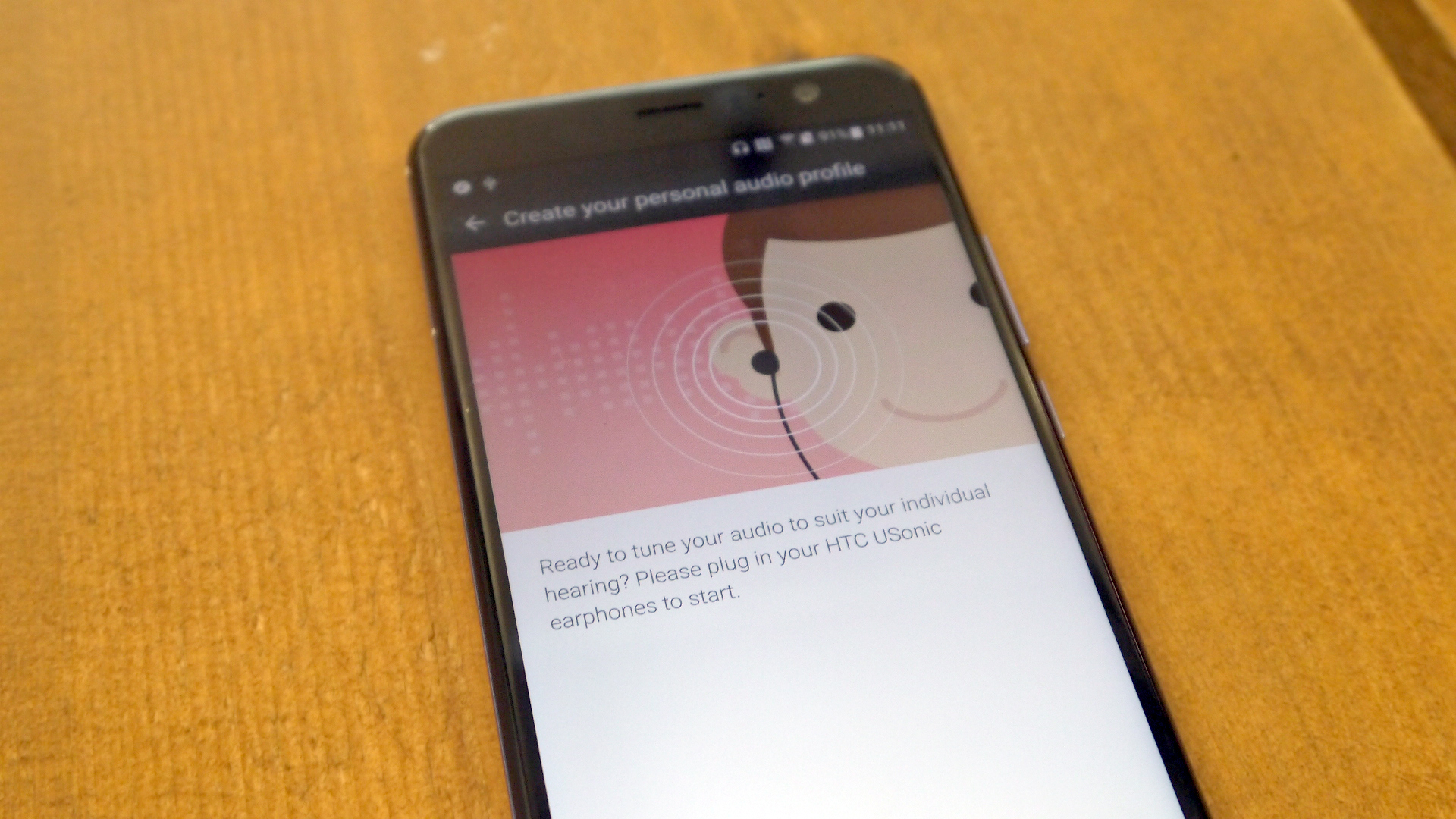
Secondly, they offer noise cancellation... apparently. They pack microphones in to read the ambient noise and provide a more isolated audio experience, although they’re nowhere near as good as a pair of noise-cancelling over-the-ear cans.
It’s probably partly down to the noise isolation offered by bigger headphones, but using the USonic headphones on a plane was only a little bit better than using a decent pair of buds without power-sapping noise cancelling.
Either way, the sound is more encompassing, and feels more direct. You also use the bundled headphones to scan the inside of your ear and create a personal audio profile, which is pretty cool, and the resulting effect does sound more impressive.
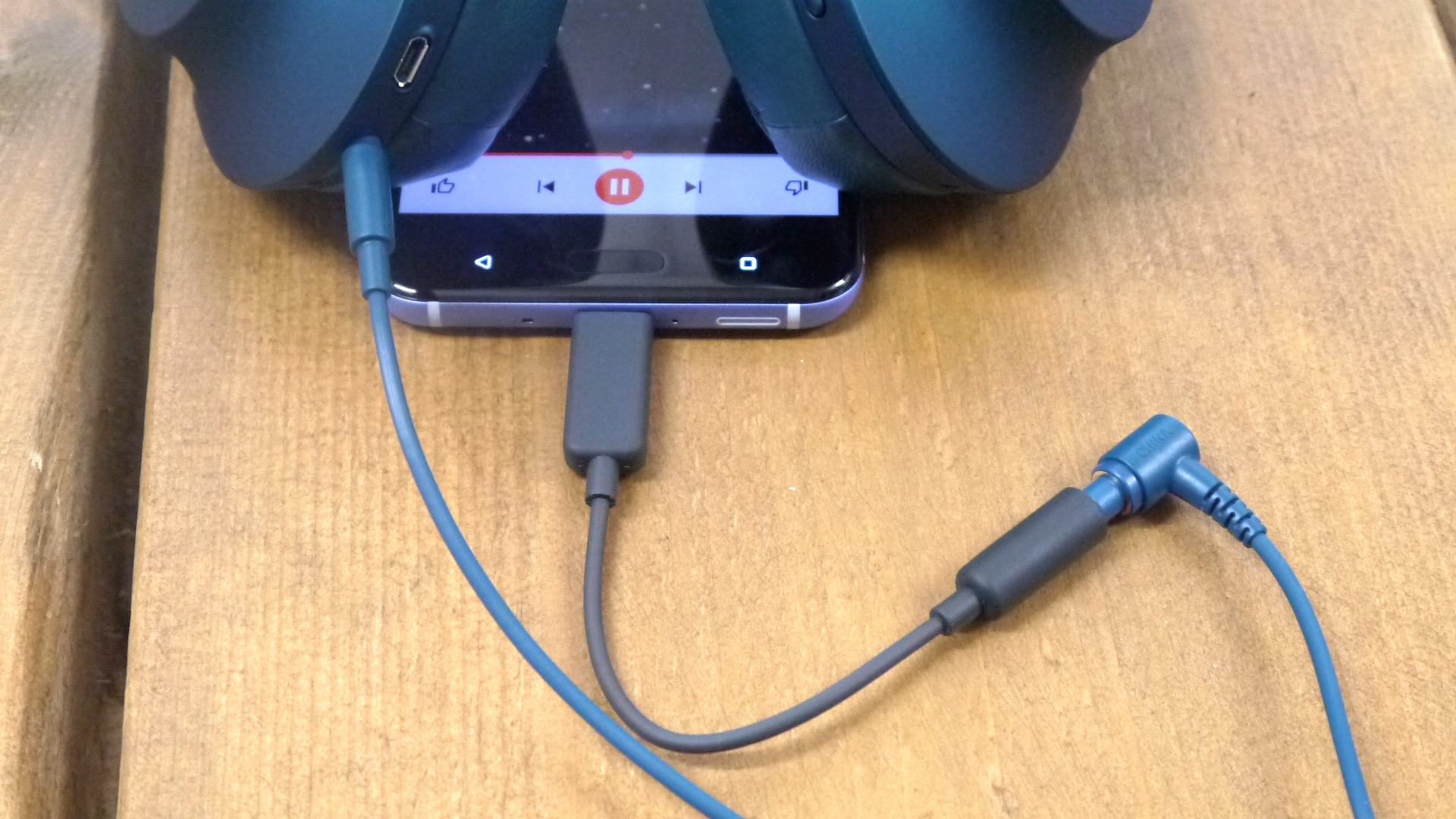
You can make things even more defined by listening to a set of noises in a quiet room to work out the level of frequency your ears are able to discern, which also seems to work well and is worth doing.
While it’s annoying that HTC has dropped the headphone jack on the U11 (we’re still not in a place where forcing this decision on consumers is a good idea – and it’s not like this phone is massively thin) the bundled adaptor is excellent.
It’s not only more robust than the one Apple offers, but it’s also got a digital amplifier inside, so whichever headphones you plug in they’re going to sound better. It does draw power, but not a lot, and it really improves the sound quality.
The final element is the HTC U11’s Boomsound speaker setup. There are two speakers, but HTC has stuck with the plan of splitting the sound between high-end and mid/bass levels, with the former coming out the earpiece and the latter firing downwards at the bottom of the phone.
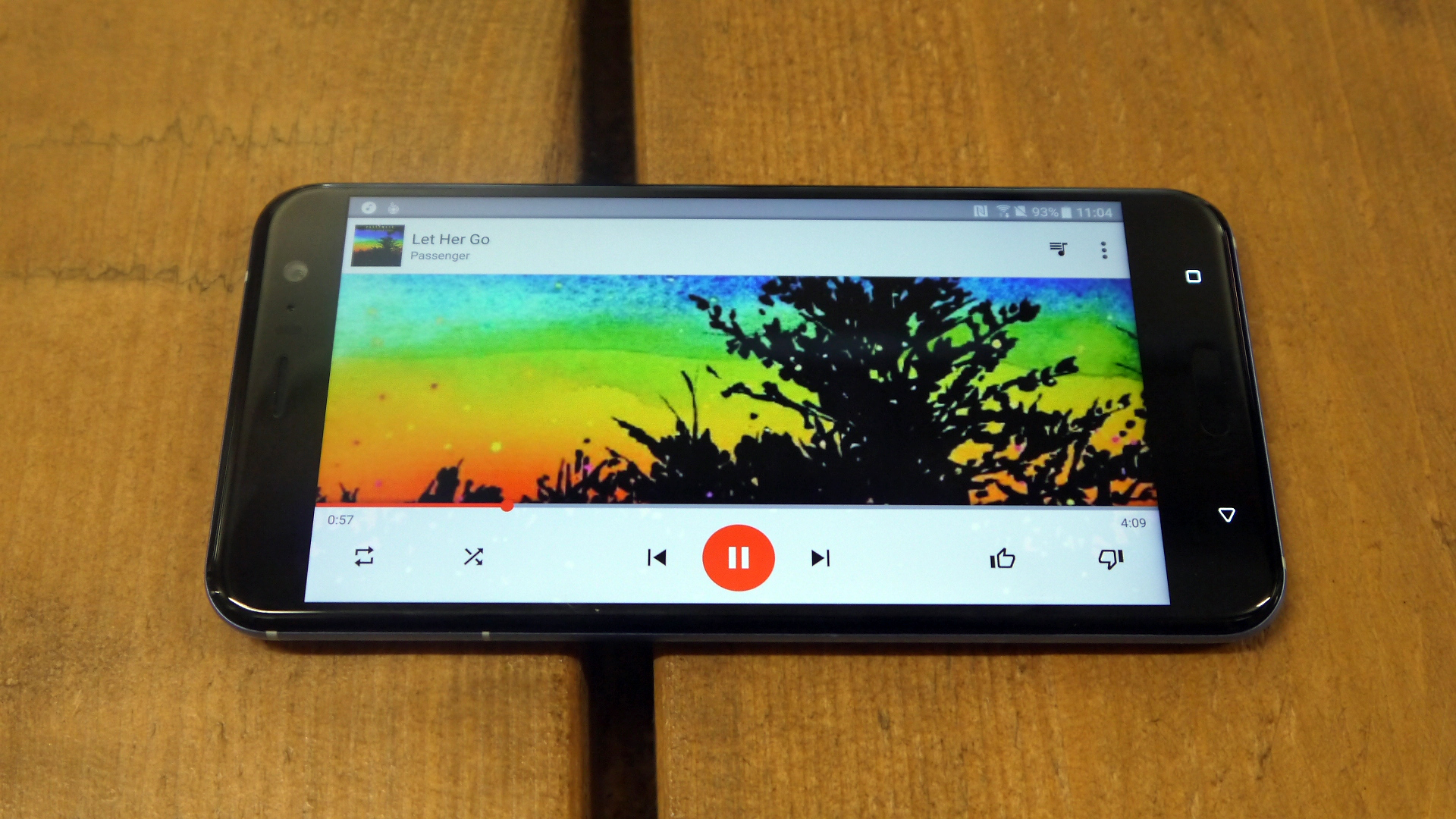
This means it’s easy to cover the loudest speaker, and when holding the phone in the hand the sound quality doesn’t work as well.
However, HTC has added a clever trick into the U11: place the phone down on a flat surface and the resonance chambers expand, with the improvement in sound quality marked. However, this is only any good if you’re playing music, as for video you want the phone propped up, so you’ll lose the impressive quality.
We still wish there were two speakers firing forward on the HTC U11, like on the One series of old. They worked well and looked iconic… but those days have passed.
If you like listening to music on a phone, then the HTC U11 has got it all: excellent bundled buds, clever audio algorithms, a strong headphone adaptor and good external playback.
The HTC U11 is a brilliant phone... but in a world already populated by brilliant phones. From the stunning rear glass to the speedy internals to the strong camera to the insanely good audio to the improved (and smart) battery, it's almost hard to find fault with this phone.
But like its recent predecessors, the HTC U11 struggles to attract the attention it merits. It doesn't have the wow factor of the Samsung Galaxy S8's massive Infinity Display, nor the impressive slow motion video capture and HDR movie playback of the Sony Xperia XZ Premium.
Since its launch we've also had the iPhone X, Google Pixel 2 XL, Huawei Mate 10 Pro and even the Samsung Galaxy S9, which now makes it a tougher sell.
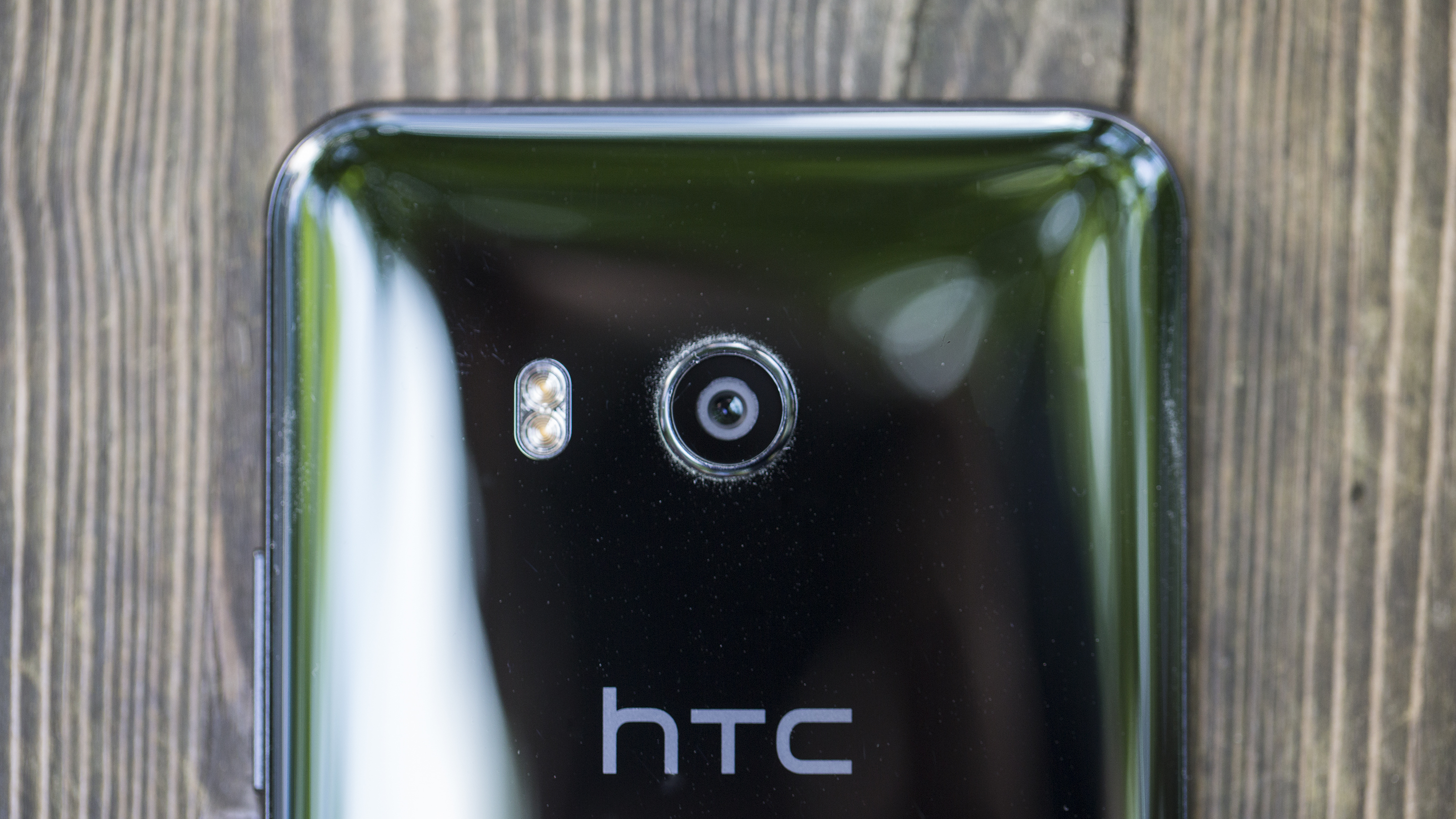
What HTC has done is create a brilliantly competent phone, and tried to innovate by letting you squeeze the sides… but sadly its headline feature doesn't impress.
If it had come with the improved software that lets you customize the squeeze to whatever you wanted, then this would be a very strong phone... we can see the potential for being able to use pressure as a multi-function button when holding your phone, but we've currently no idea if HTC will integrate it properly.
The same goes for having Alexa functionality built in... it's not there yet. We're not sure why HTC would launch this phone without these key features, but such is the rate of smartphone feature innovation now that it seems any brand is looking to just get something out half-finished and then iterate, rather than wait for it to be fully-baked.
Who's it for?
The HTC U11 is, firstly, one for fans of the brand. Its Sense UI hasn't been overhauled for this new handset, and that will please those who like the intelligence the software offers.
HTC's Sense Companion and Boost+ could be seen as intrusive by some, but anyone who’s accepting of the mission HTC is on will really appreciate this functionality.
The design is alternative, and while it's a fingerprint magnet, the two-tone curved glass is a badge of honor – this is a phone that we came to love holding and showing off.
But ultimately, the HTC U11 is the phone for anyone who wants a good-looking phone that can take great pictures and offers one of the best sonic experiences around. Annoyingly it's still a little expensive for what's on offer, but the price should come down over time.
Should I buy it?
If you're in two minds over whether to buy the HTC U11, then see if you can take it for a test drive. You should only really buy it if you value your audio experience on a smartphone and don't mind using a dongle for your fancy headphones that still have a 3.5mm jack (because they ALL still do).
You'll need to not mind forking out a little more money than it's really worth... but if you wait a month or two the price should have dropped to a more palatable level.
If you're buying this phone for the squeezable sides – don't. Just don't. It's a nice idea, but it's one that seems like a good idea on paper but doesn't really translate. We're looking forward to trying this method of interaction out once it's fully-implemented in July, but for now it's a gimmick.
The HTC U11 is a strong – very strong – phone. But it's still one that will only really impress those who want something that looks a bit different, have an affinity to HTC and respect good quality audio from a phone, rather than a handset that will wow you the second you hold it in your hand.
Not convinced that the HTC U11 is for you? Then give these options a try instead
Samsung Galaxy S8
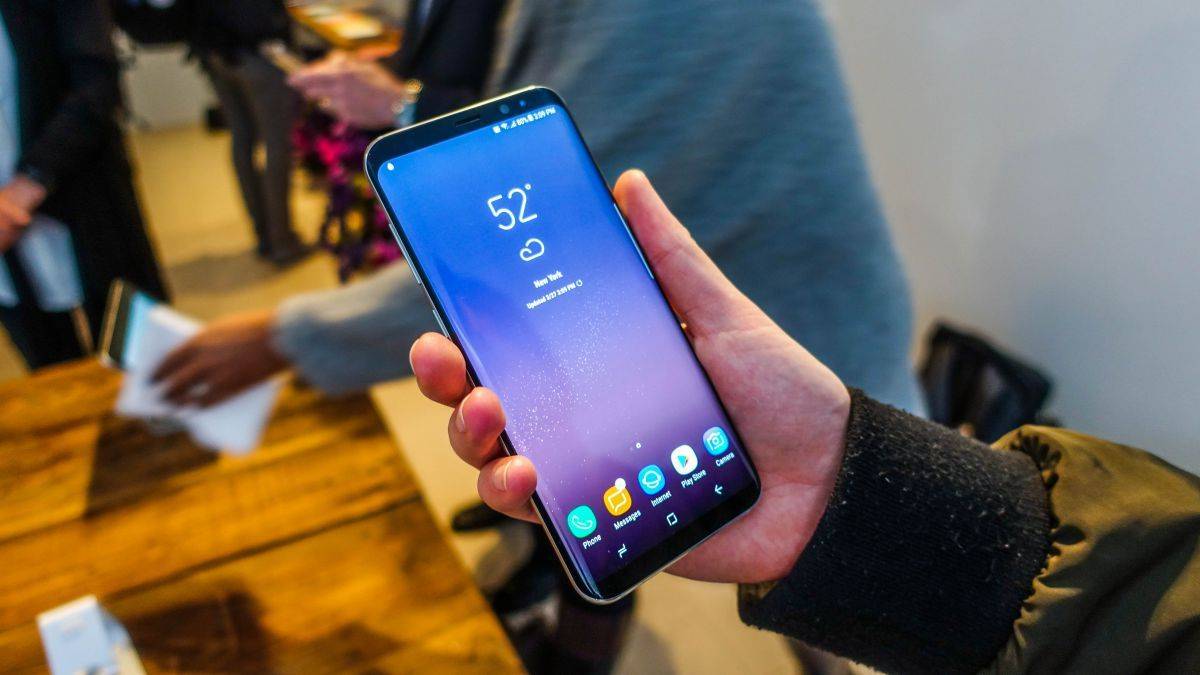
This is our phone of the year so far, and the reason why is simple: it does everything well, and combines this performance with a stunning look that nothing else on the market is really offering right now.
The Infinity Display is the main event of this phone, and while some are unsure about the new longer screen ratio it's a powerhouse of battery life, gaming prowess and snapping capabilities.
The downside is the sky-high price, and that's where the HTC U11 wins out... but the Galaxy S8 does almost everything HTC's new phone does, and in a slightly slicker package.
Read our Samsung Galaxy S8 review
LG G6
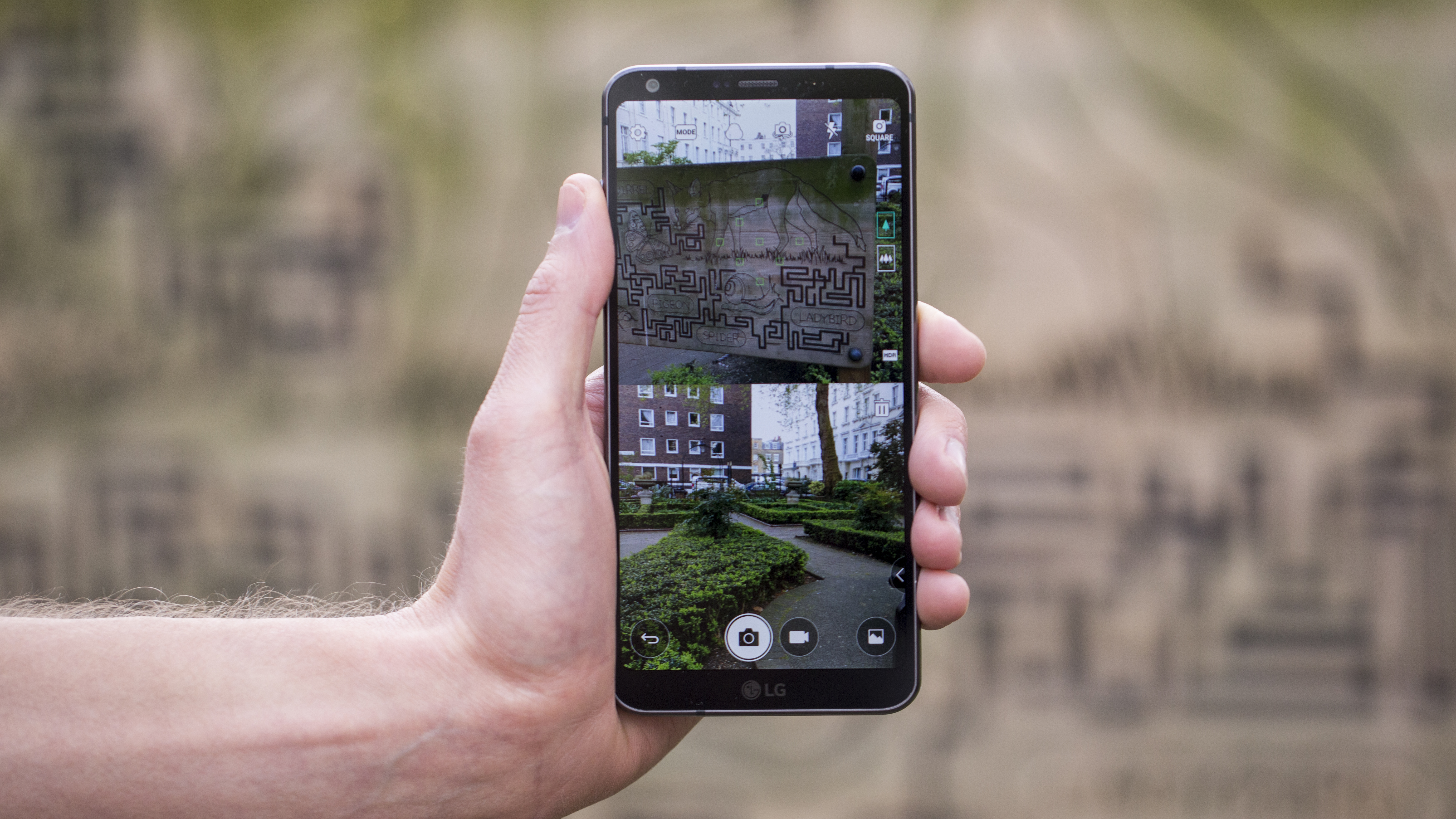
Keep an eye on the LG G6, as it’s a handset that will only get better with time… because the price will come down, and that will increase the appeal of this phone no end.
It’s already a strong proposition, as it offers a large display that’s similar to Samsung’s, a decent dual-sensor camera, a smart interface and good build quality.
However, it relies on older hardware, so there aren’t that many jumps forward here… and the price is still rather high as a result.
Read our LG G6 review
Sony Xperia XZ Premium
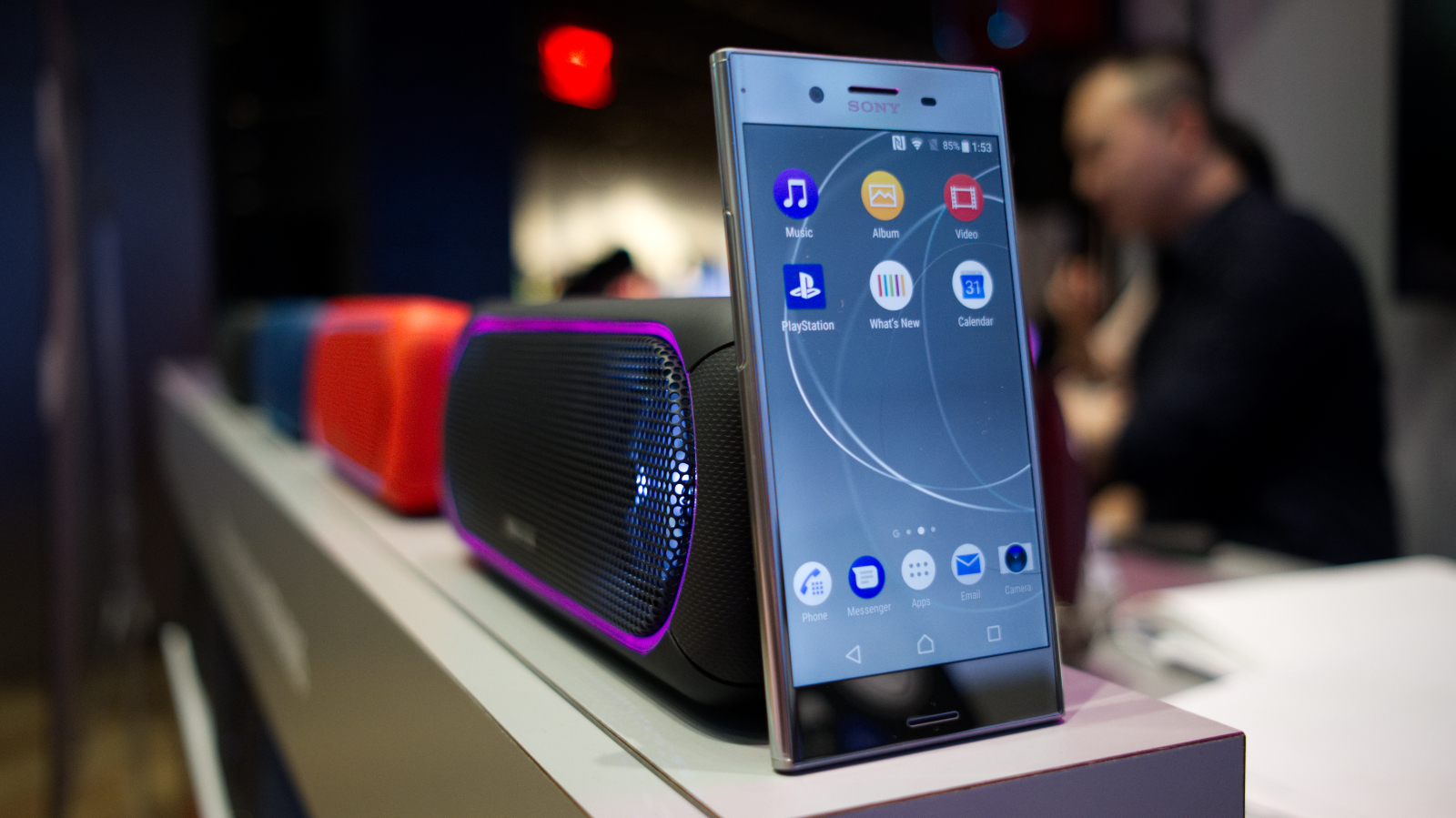
If you’re not against the design language of the Sony range, then the XZ Premium is a real contender this year.
The 4K screen is HDR-compatible, so is capable of showing some brilliant movies – and it’ll only get better with time as more mobile-optimized content appears from the likes of Netflix and Amazon.
The Super Slomo video capture is awesome as well – it’s a little fiddly perhaps, but the results are just awesome, as you can see below.
Read our Sony Xperia XZ Premium review
First reviewed: May 2017
0 comments:
Post a Comment